Description
You could be forgiven for thinking that because there are three(!) original lacquer, very good condition Conn 28M “Connstellation” saxophones on my website at the moment that these are somewhat common, but I assure you that is not the case! I think there were probably only a few hundred made total, based on the very narrow serial range that you see for these. I will copy and paste the general statements about the 28M from the other description, with the unique description of this particular instrument’s physical and playing condition at the bottom.
The Conn 28M will always have a special place in my heart. It represents the last time one of the great American saxophone manufacturing companies tried something wholly new, and although the horn never really found a market and not many were made, they are fantastic instruments that besides being unique and historically interesting, play *really* well.
These saxophones were redesigned, utilizing many ideas from Allen Loomis (Conn’s resident saxophone visionary) and Hugh Loney, with input from Santy Runyon, with the aim of creating a saxophone that had extremely slick keywork and a very balanced scale. The keywork, although familiar under the fingers with regard to placement and layout, is mechanically quite different from any other saxophone and has been built from the ground up with the goal of reducing mechanical friction. There are no pivot screws anywhere on this saxophone, instead the long rods have a very long hinge rod with the middle machined down so only the ends touch. The G# has a very unique torsion mechanism to provide a G# feel that is smooth throughout the range. The side keys are designed so that the angle and distance of travel is the same for each key. There are adjustment screws on the upper and lower stacks as well as the left hand pinky table. The bell keys are on the left side, and the pantsguard/bell keyguard is a large acrylic plate that was designed with the idea in mind of allowing the horn to vent properly regardless of playing position or clothing choice. The octave mechanism has three pips (octave vents), one on the neck and two on the body, which has the end result of a very clear middle D and no hiss on the A or G#, as well as excellent intonation. The keywork in general is very light, and the pearls are larger than usual for Conn and a little flatter. The overall feeling is of a very light horn, extremely slick, easy to play, excellent intonation, and very even throughout.
The one downfall of this design is the pantsguard, which is fairly brittle and often broken. Although nowadays there are excellent replacements available, this one has its original guard in decent condition. There is one repaired crack (visible in the photos) and the common small cracks radiating from some of the screw holes. I would anticipate, absent any further damage, that this keyguard will last and should not present any problems- although I will furnish you with contact information for obtaining a well made (and somewhat more durable) replacement should you ever need it. And believe it or not, I have experience shipping these so you can rest easy knowing I will remove it for shipping, wrap it separately, and it will arrive to you in good condition.
This instrument plays quite decently on what appears to be an older repad with plastic domed resonators, with a strong, moderately bright, cheerful voice. The clarity of the tone is notable, and it is a lot of fun to play with a unique look and feel and timbre that would lend itself easily to classical, big band, or small group jazz. The lacquer is original and in good condition with some playing wear and a few stand scratches near the low C#, with no evidence of past repairs or dents or resolders of any kind. It is also a unique and interesting piece of saxophone history, in very good condition, and whoever owns this instrument next will have a lot of fun being its steward for the next generation.

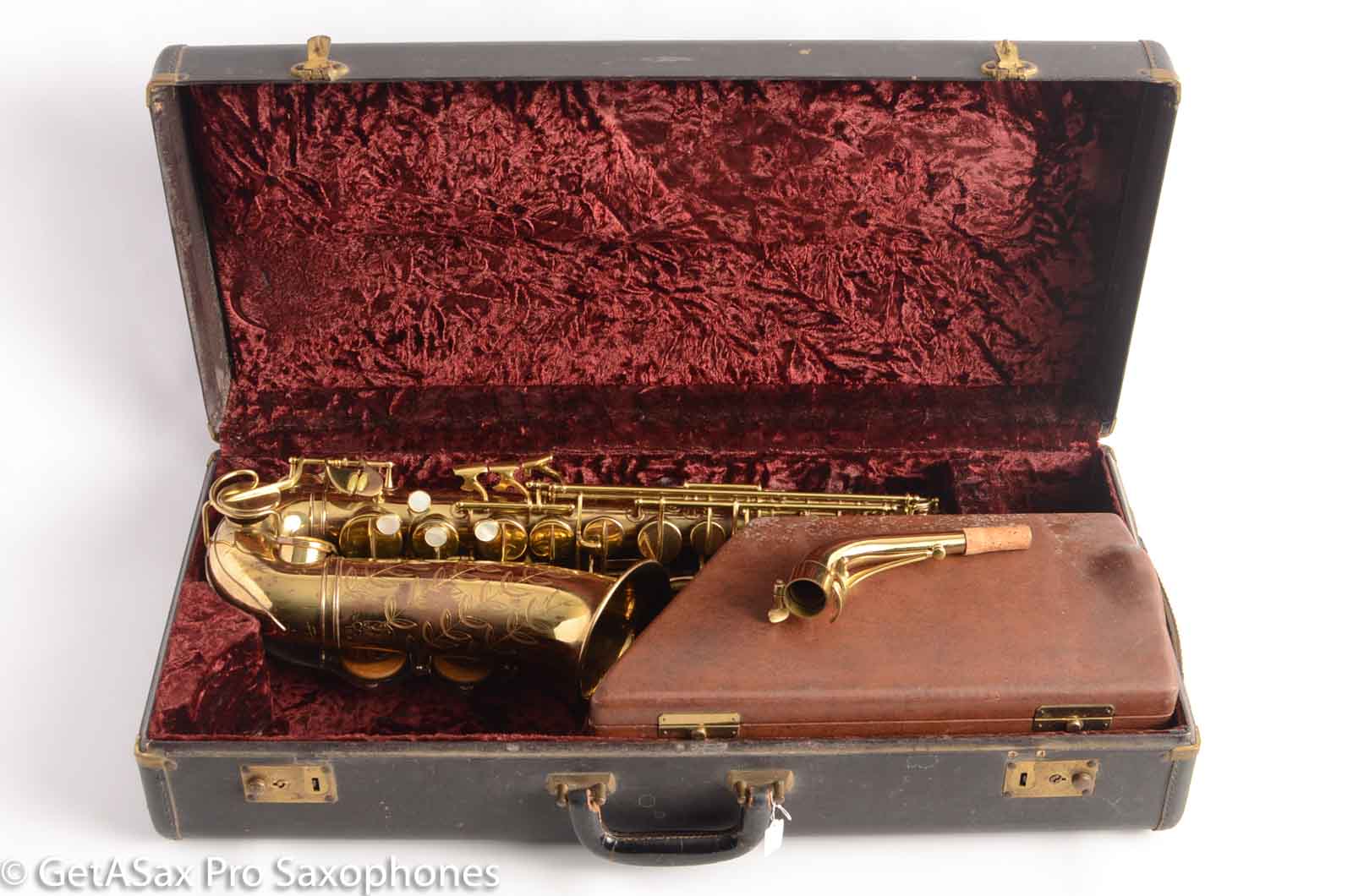
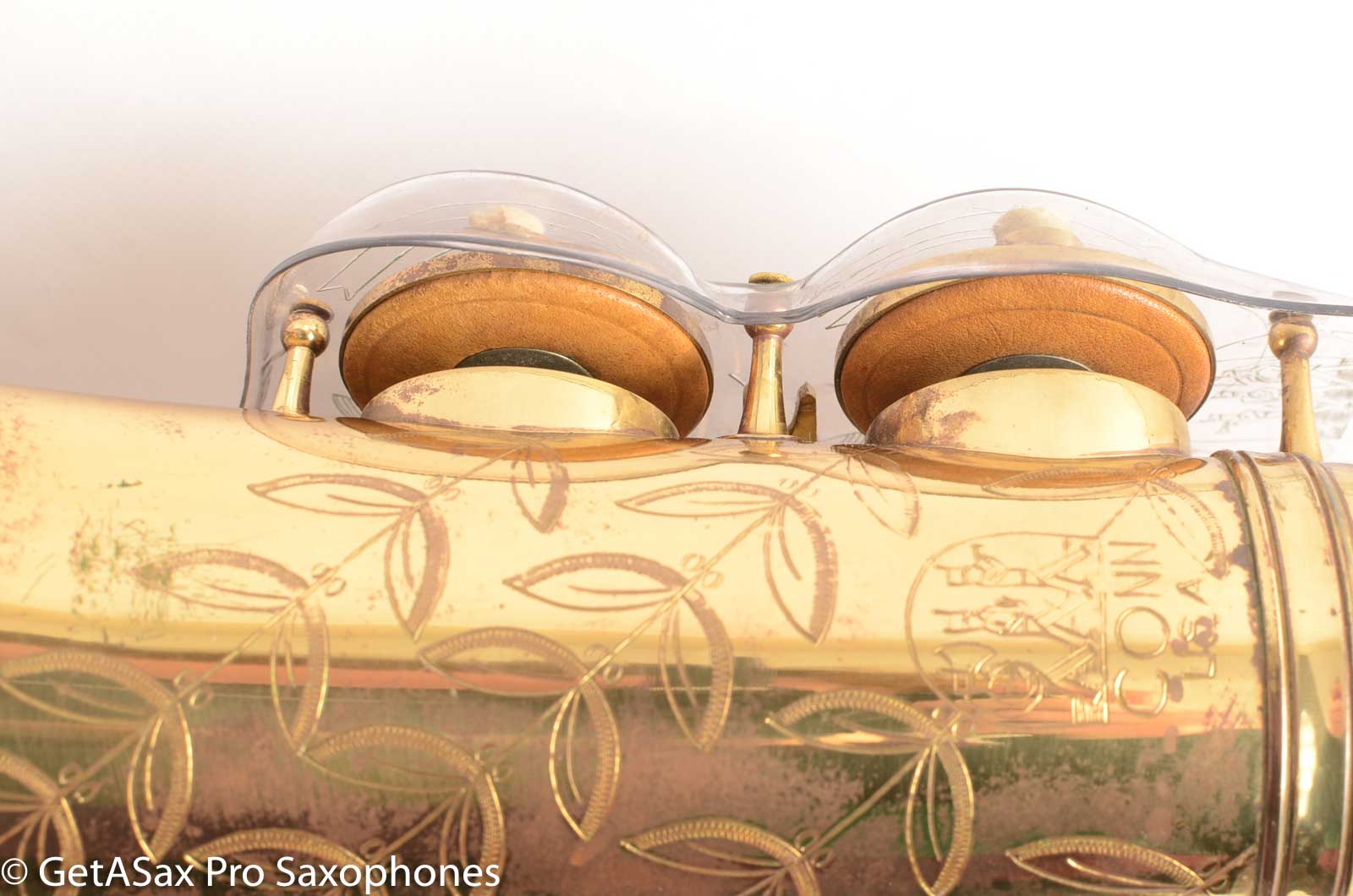
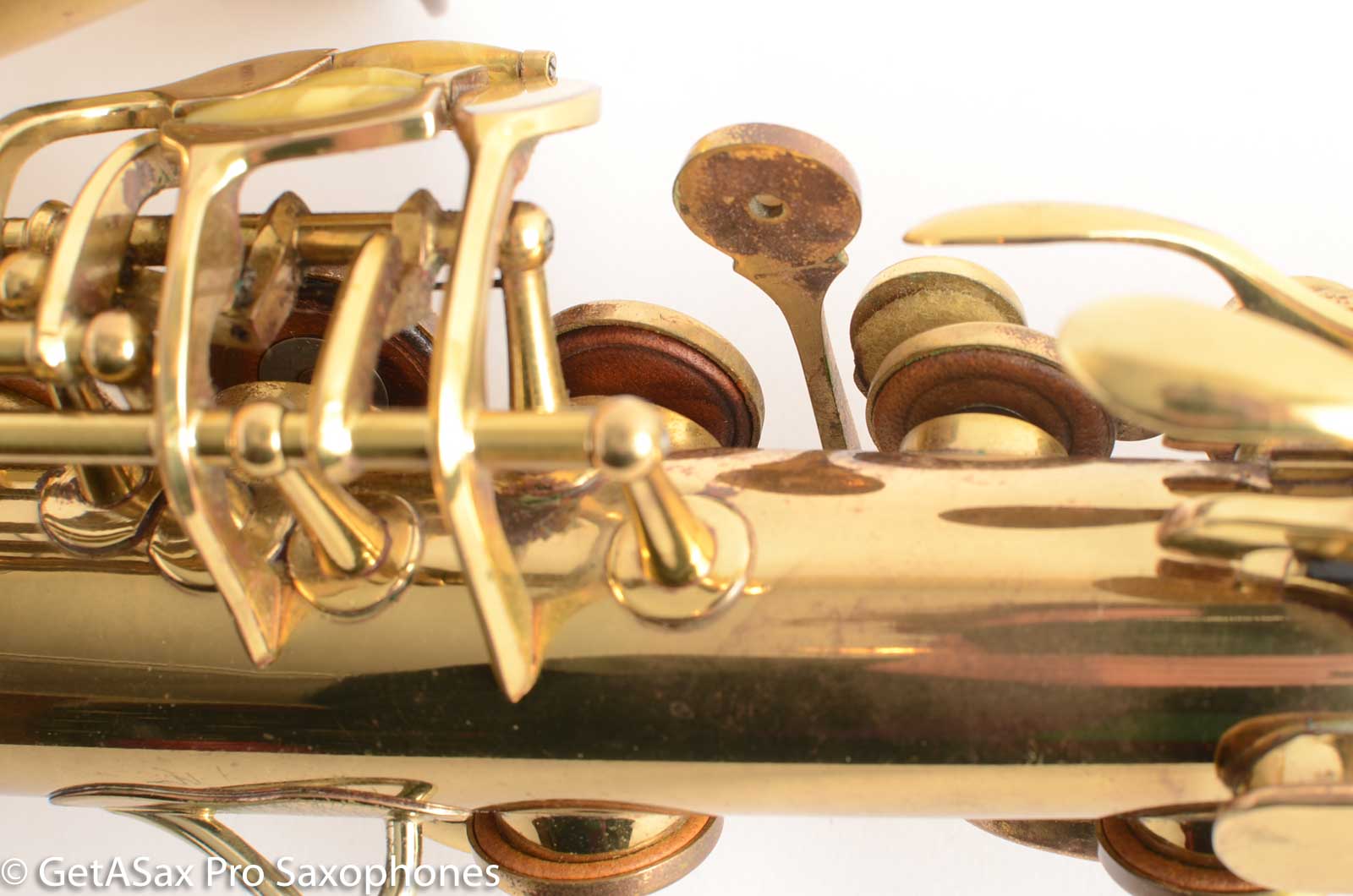
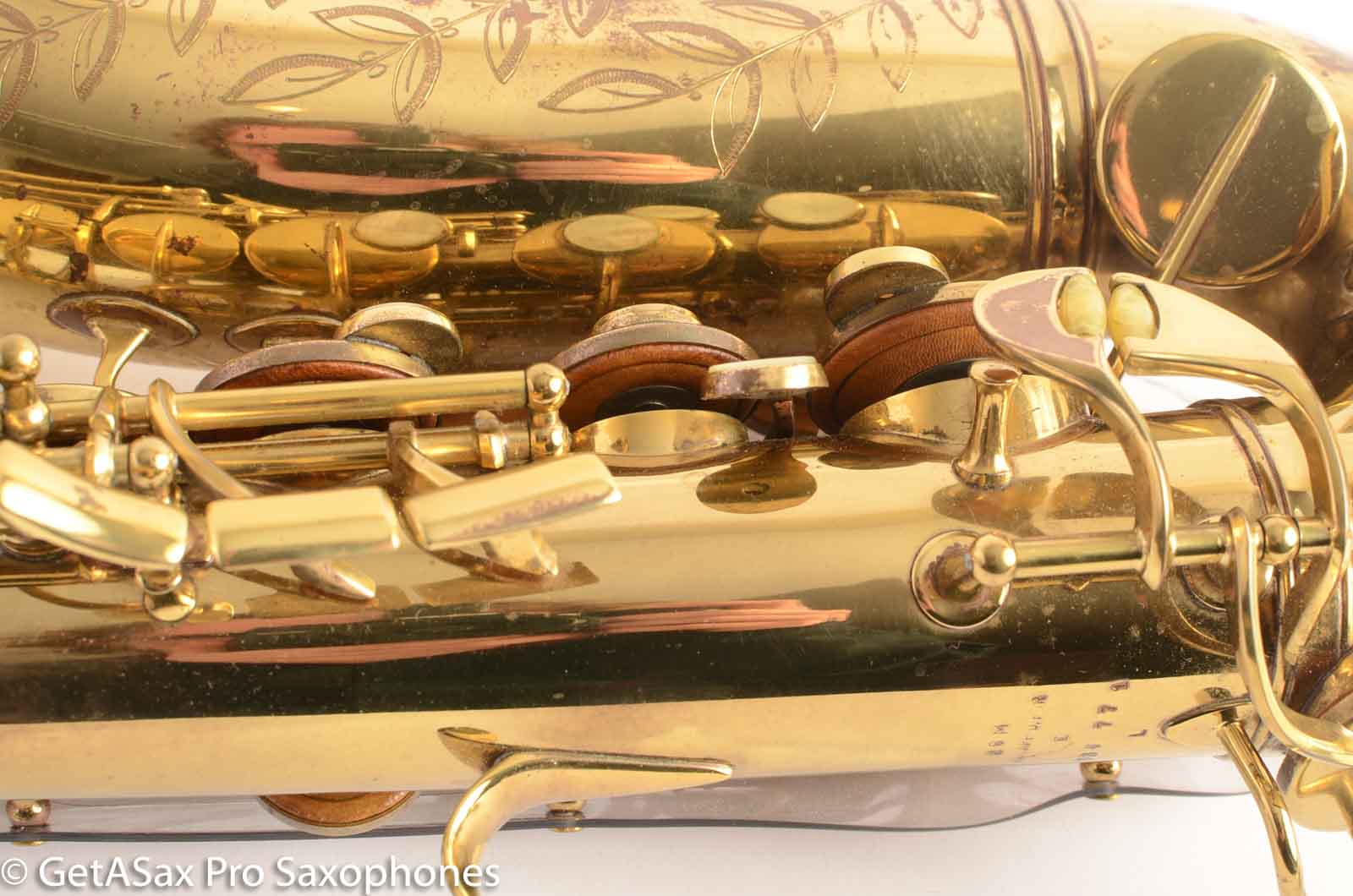


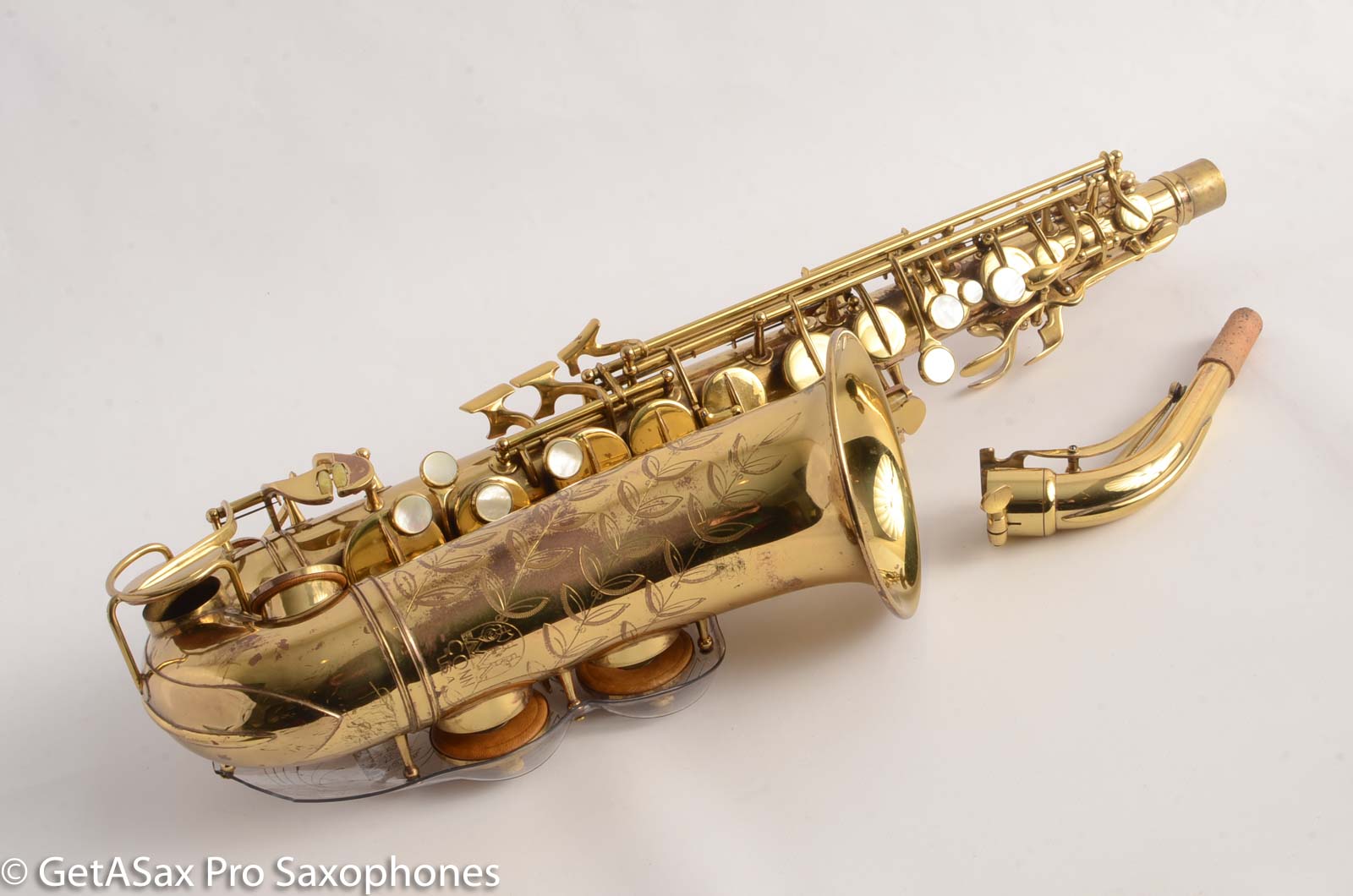

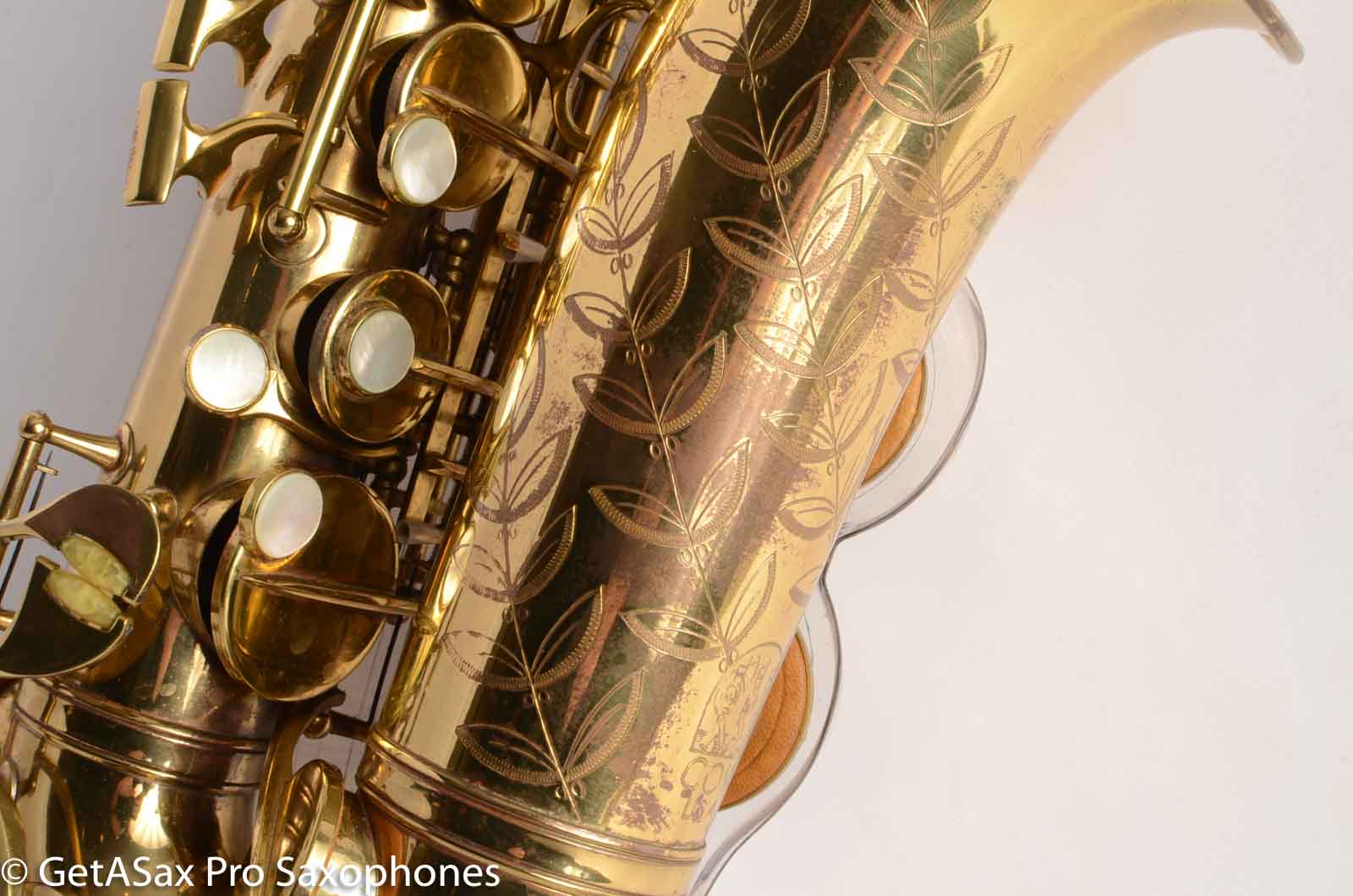
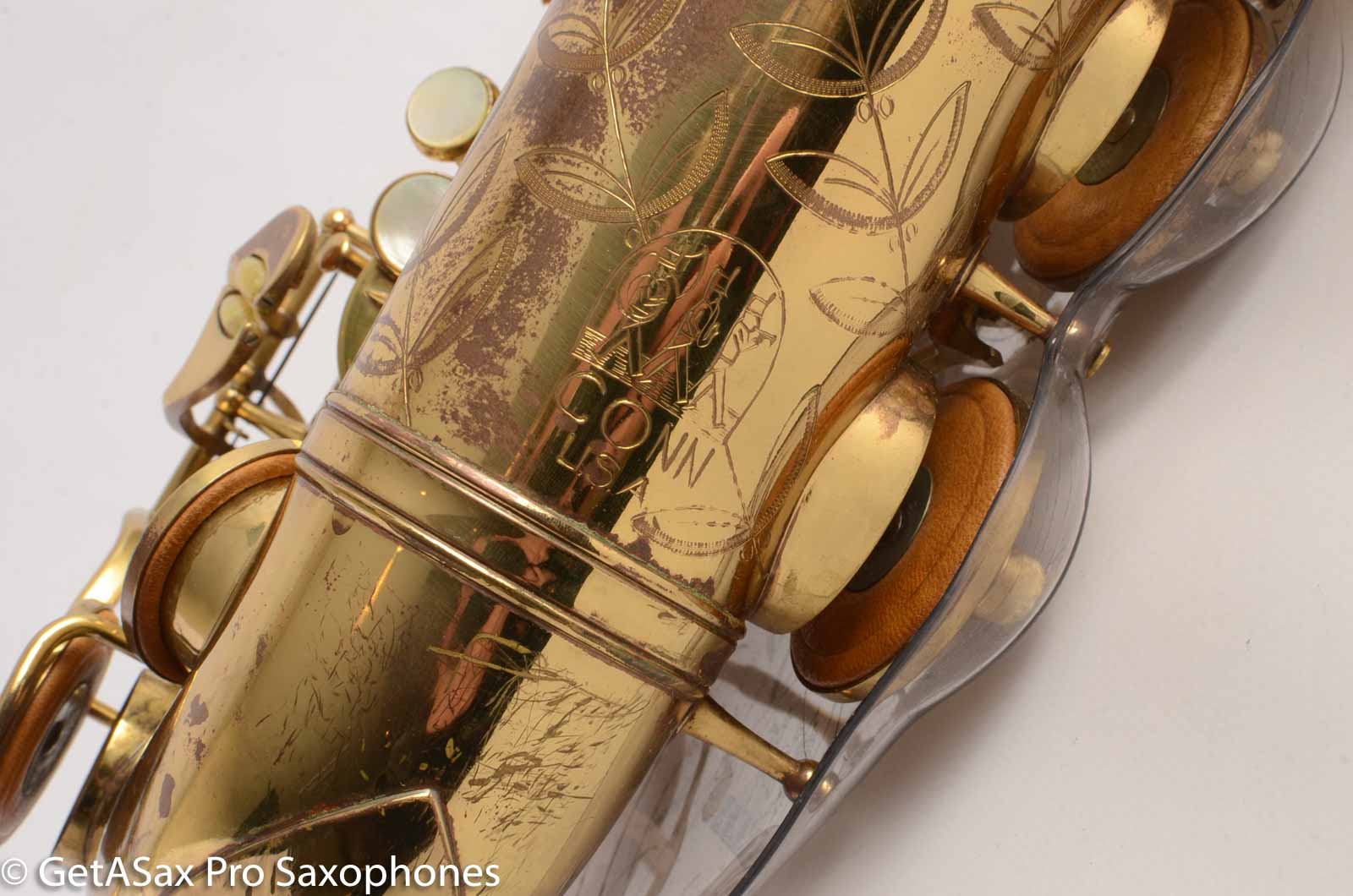

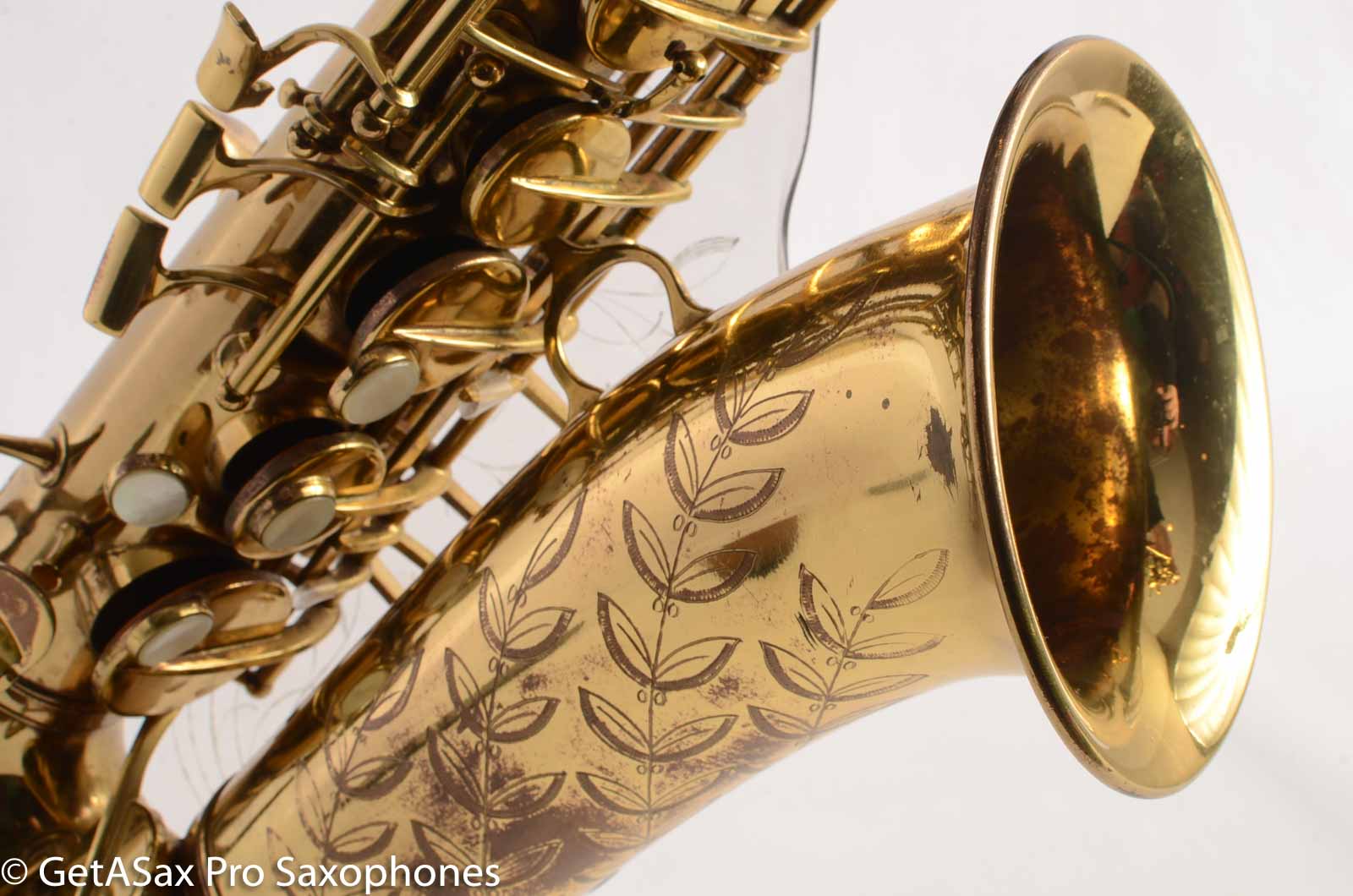
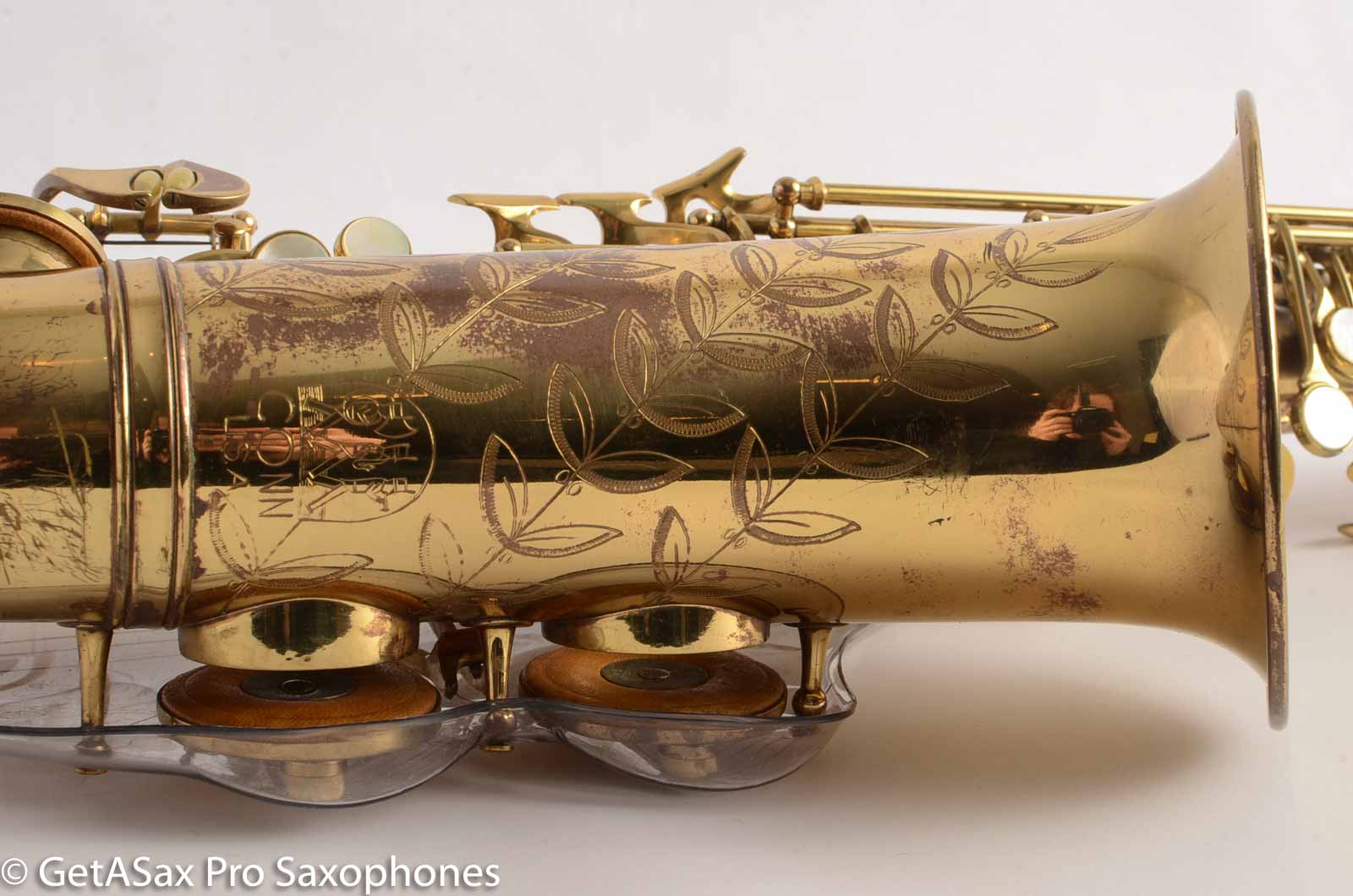

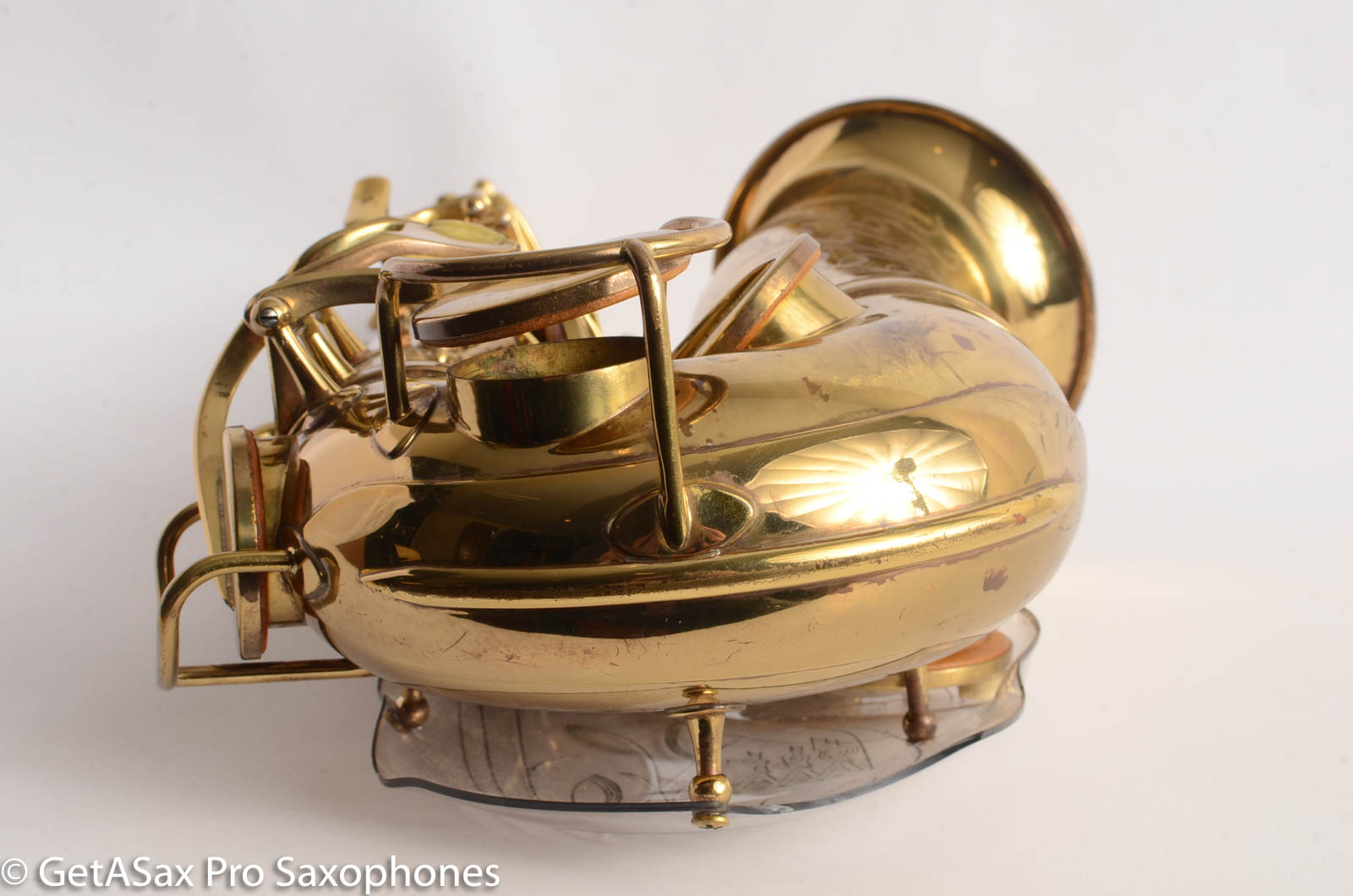
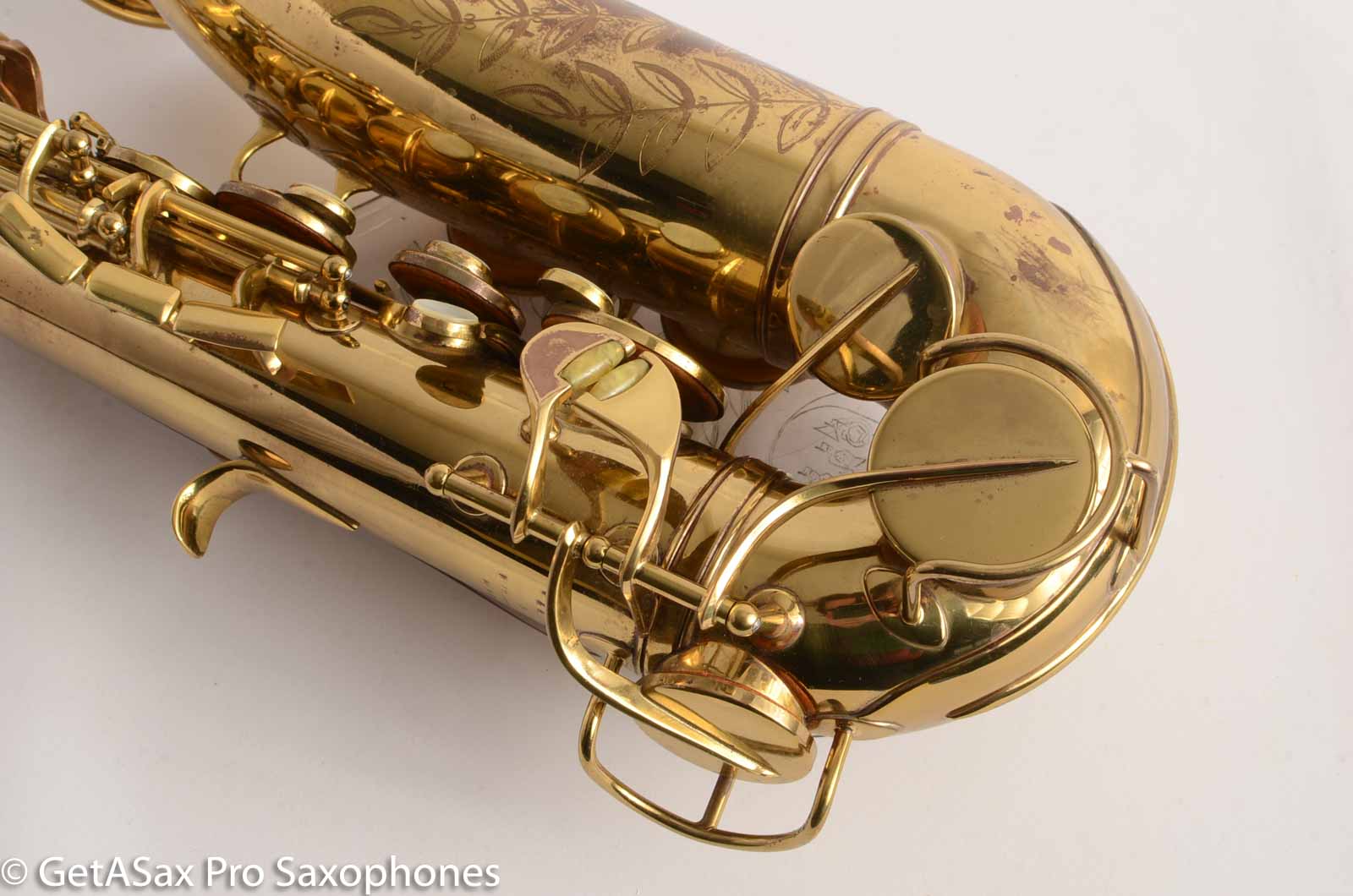
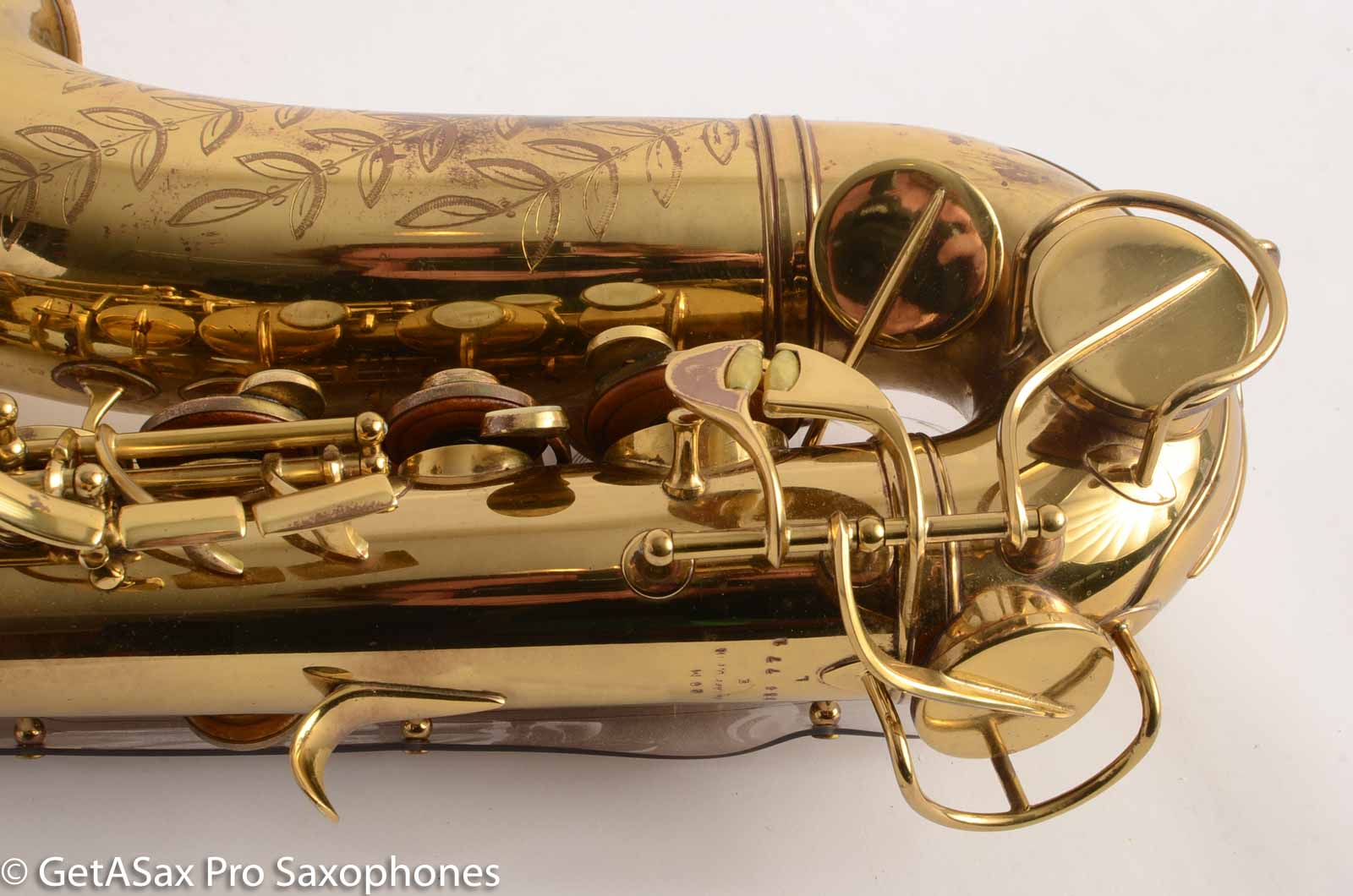

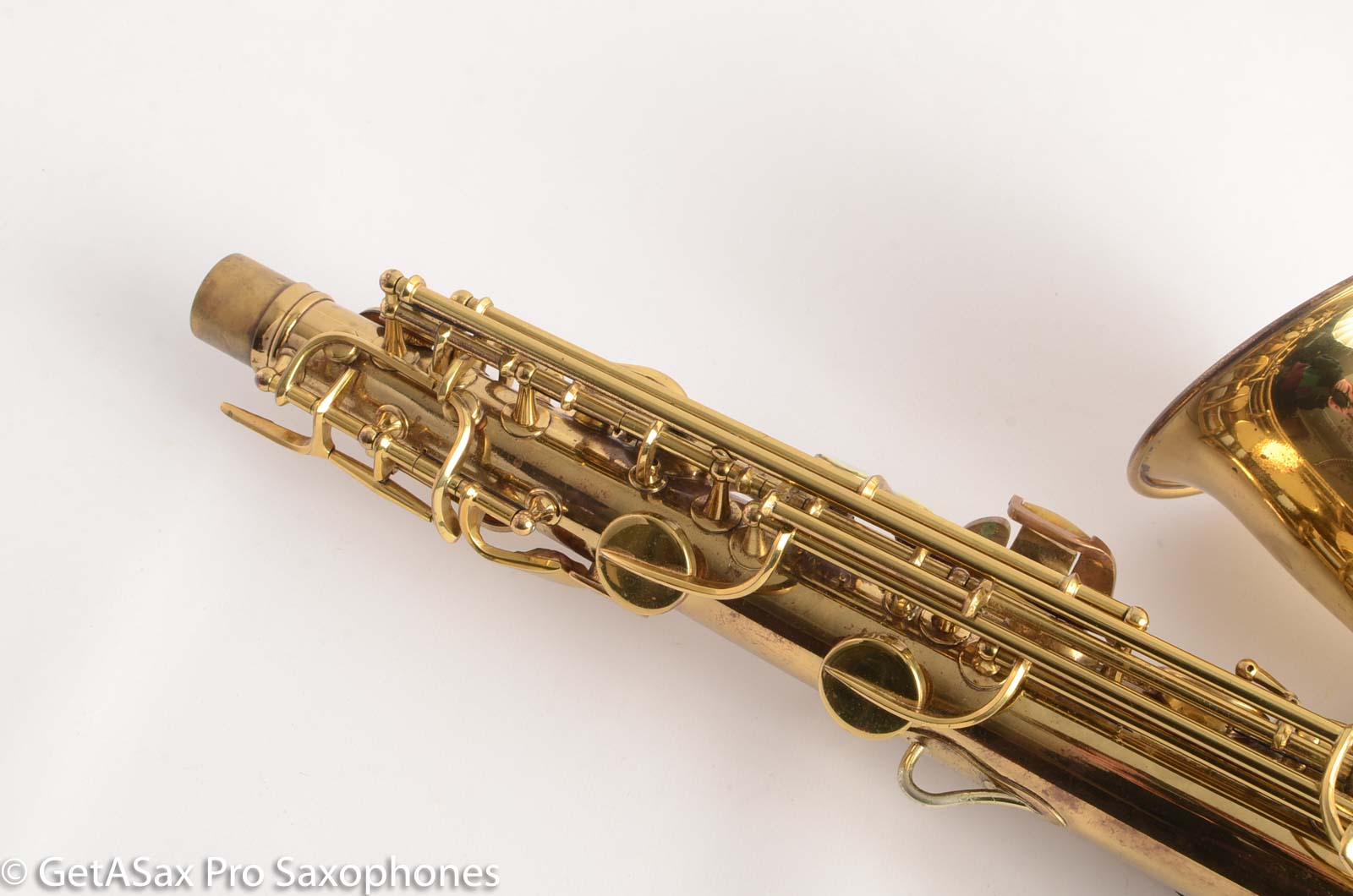
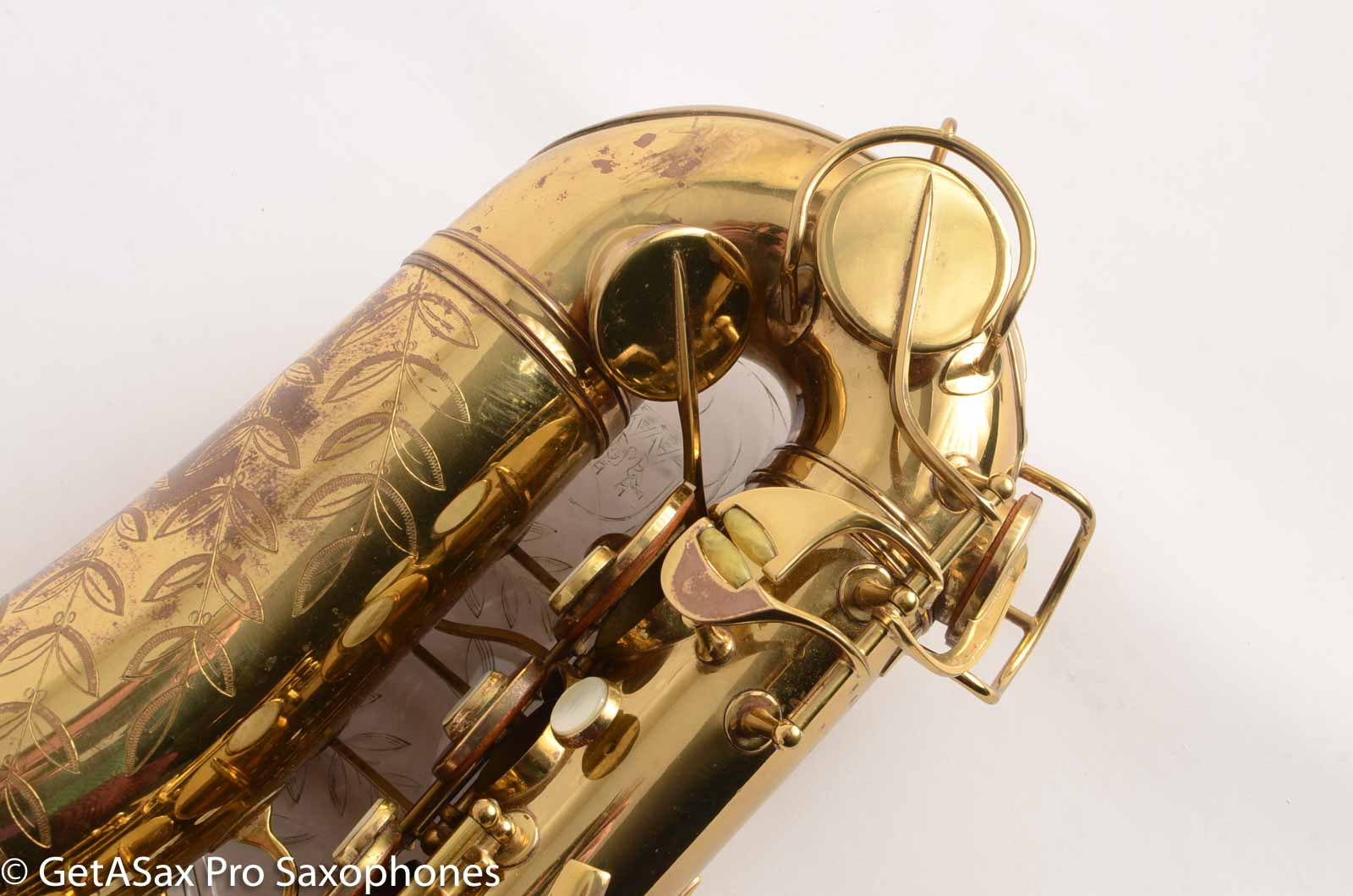
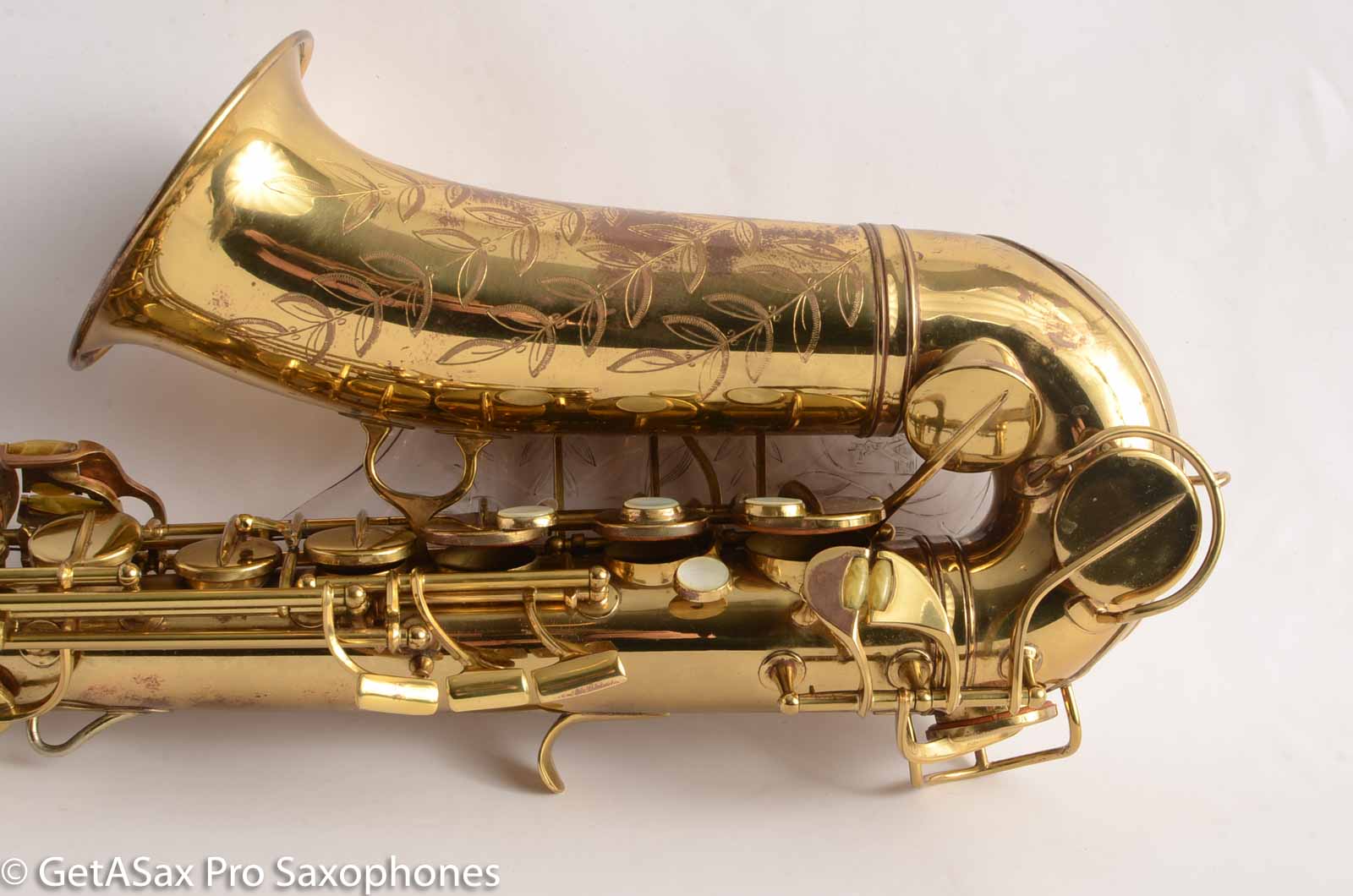
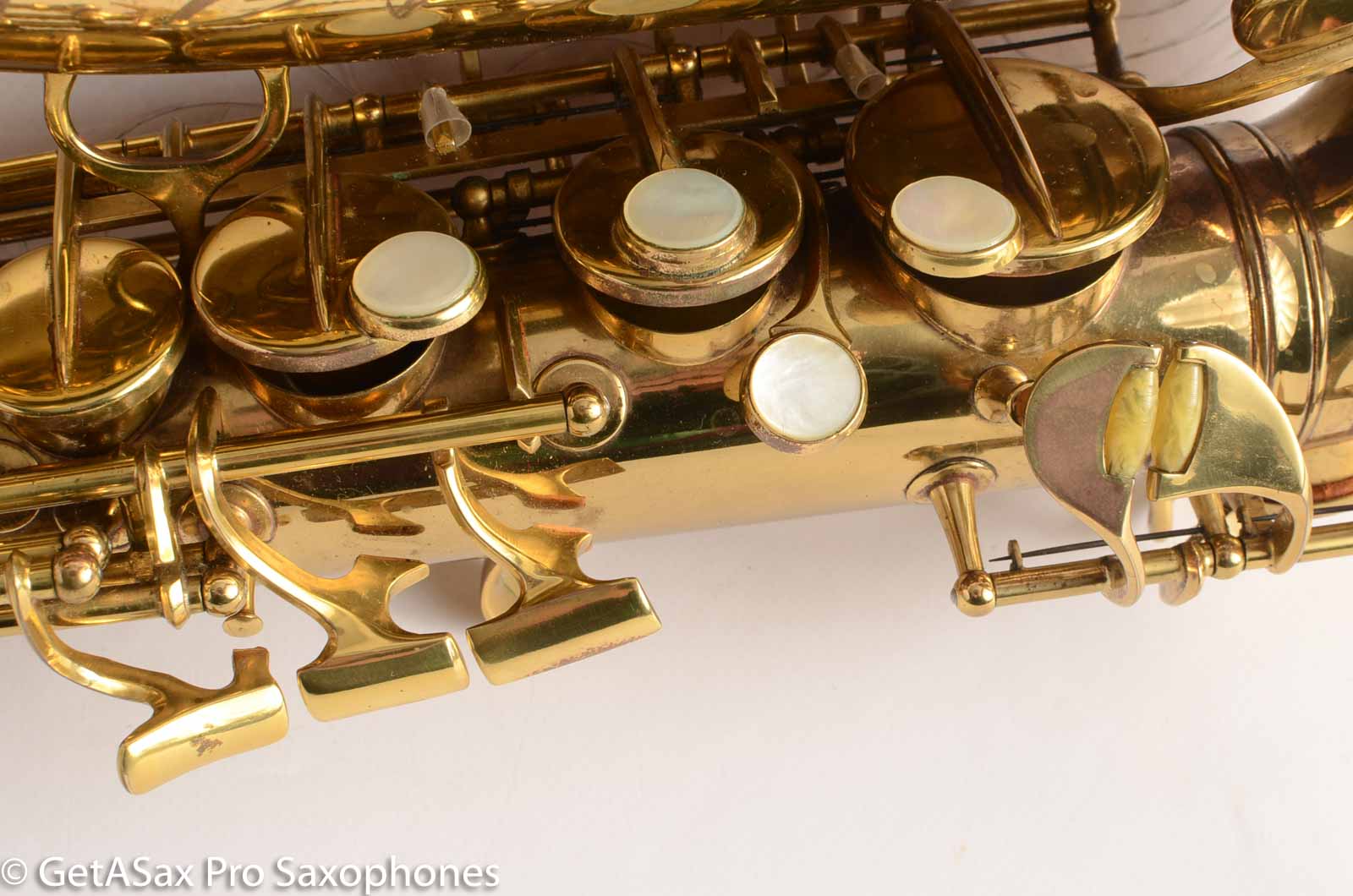
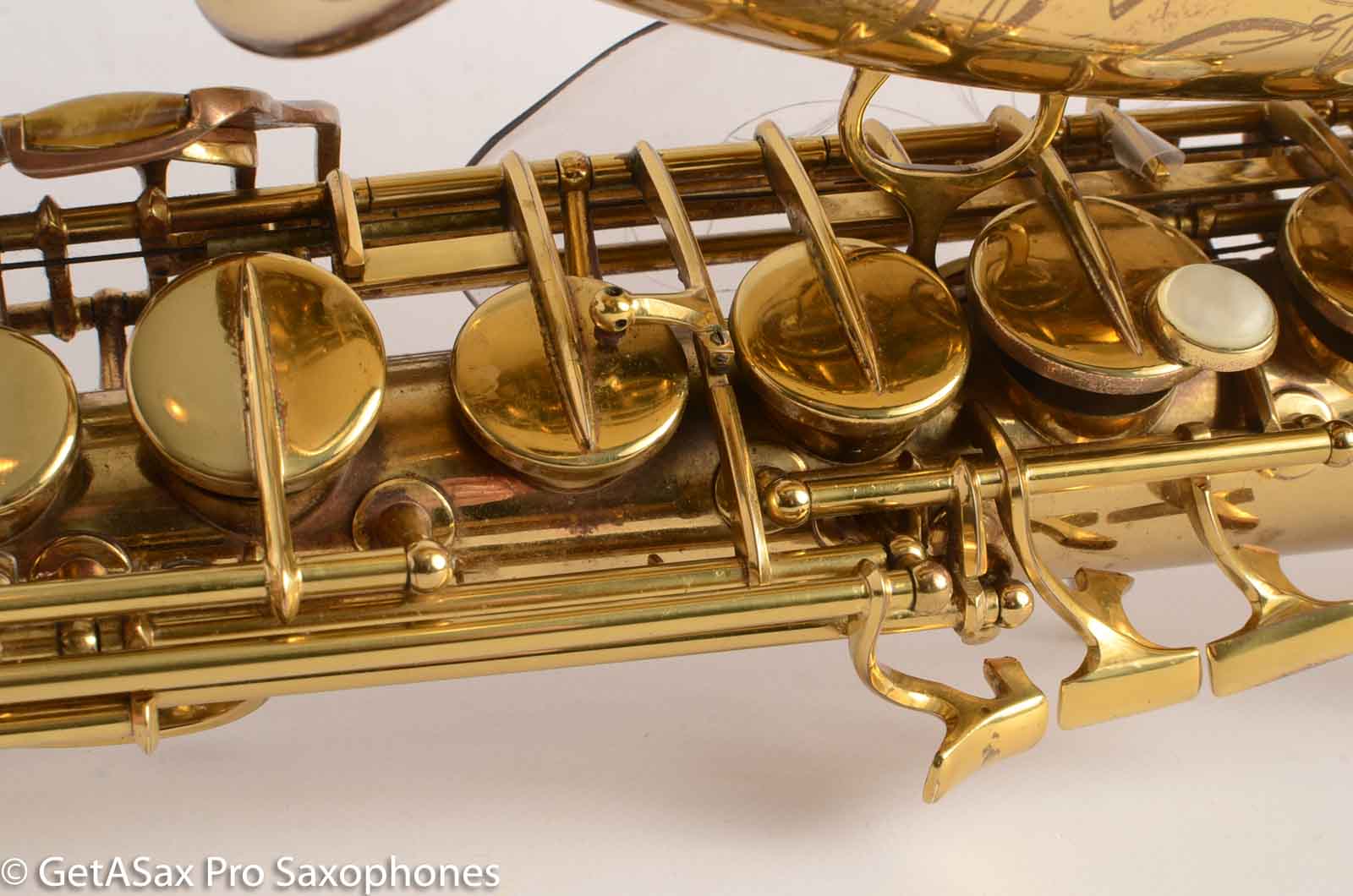
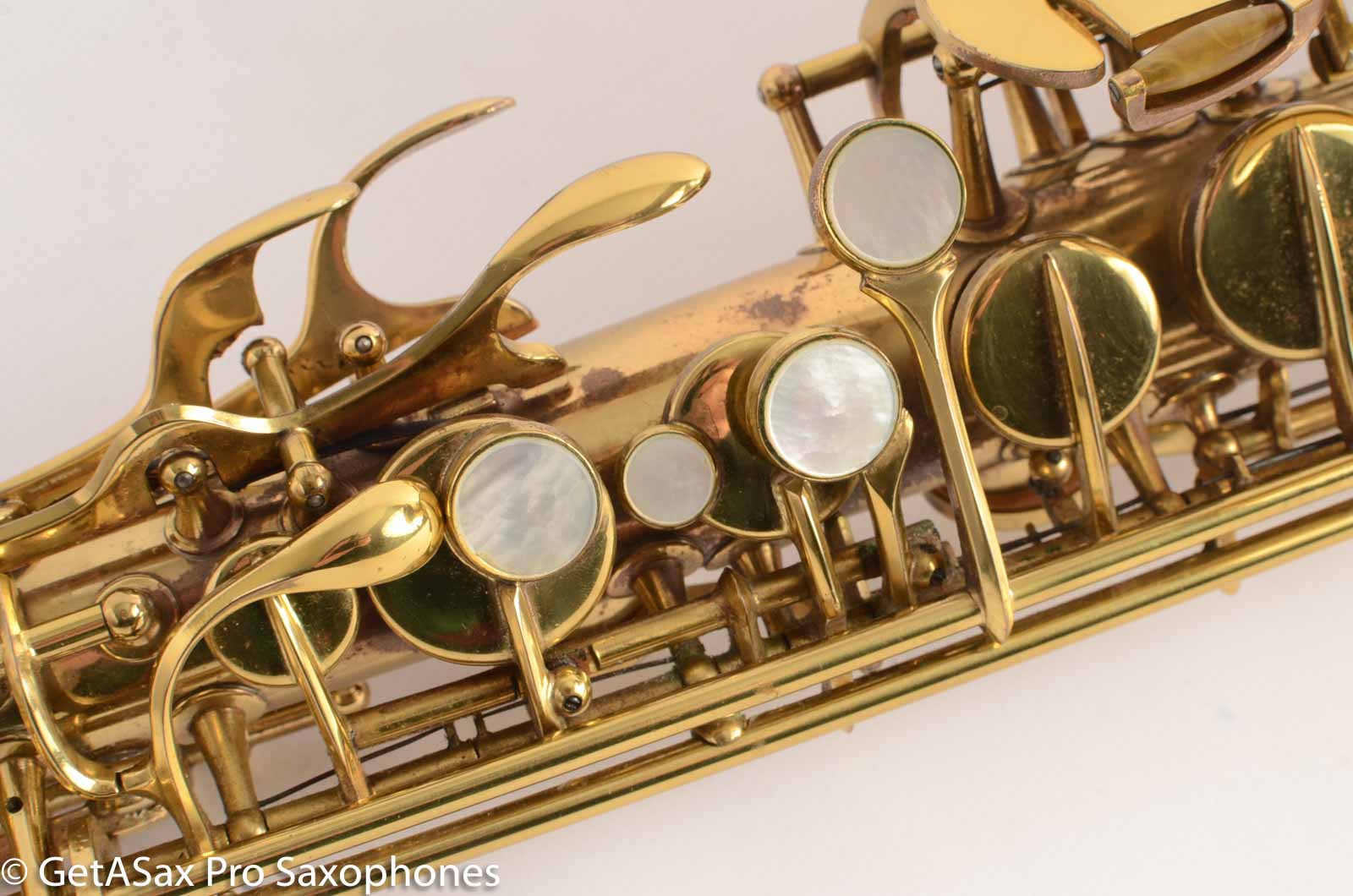
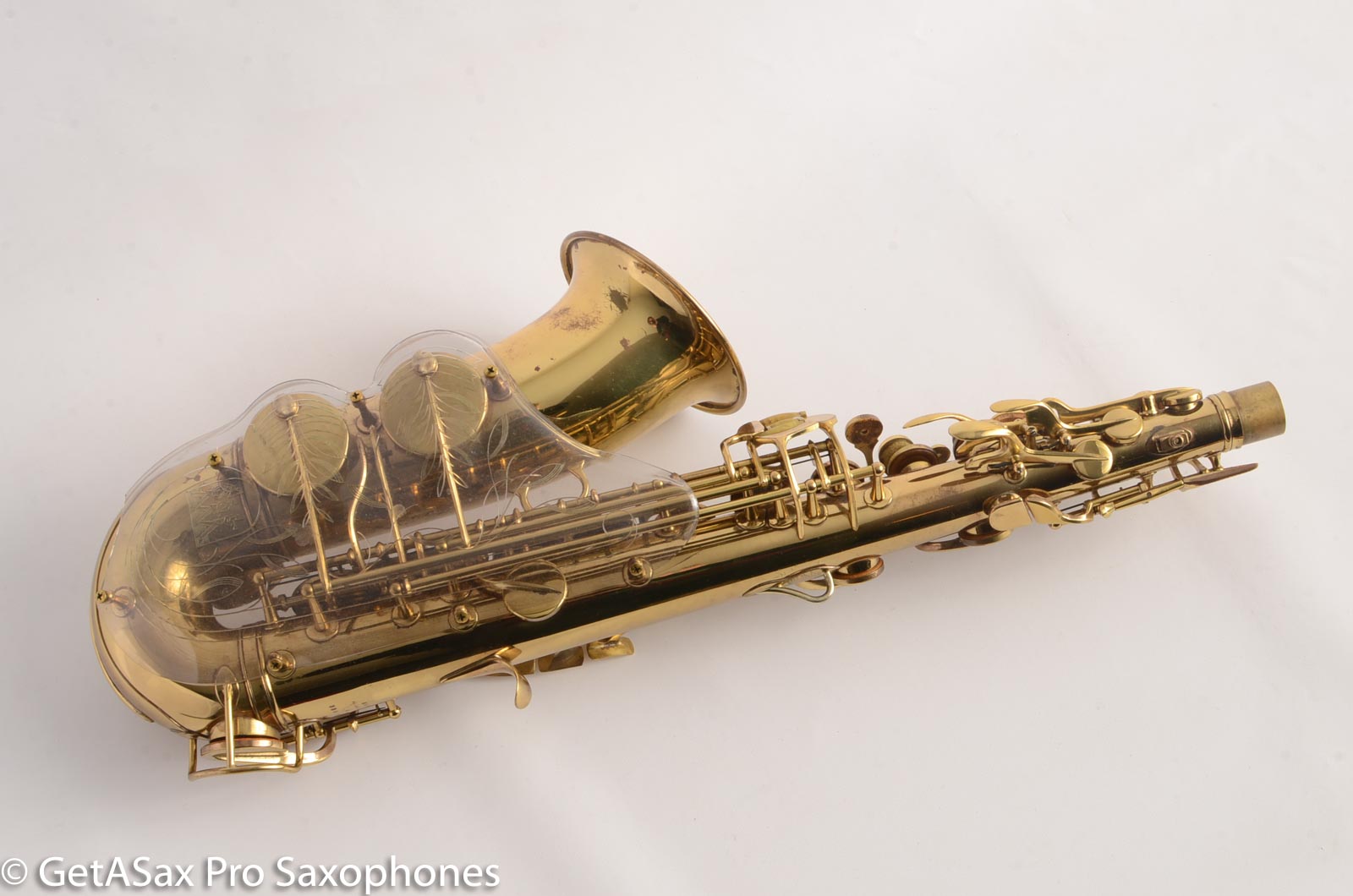
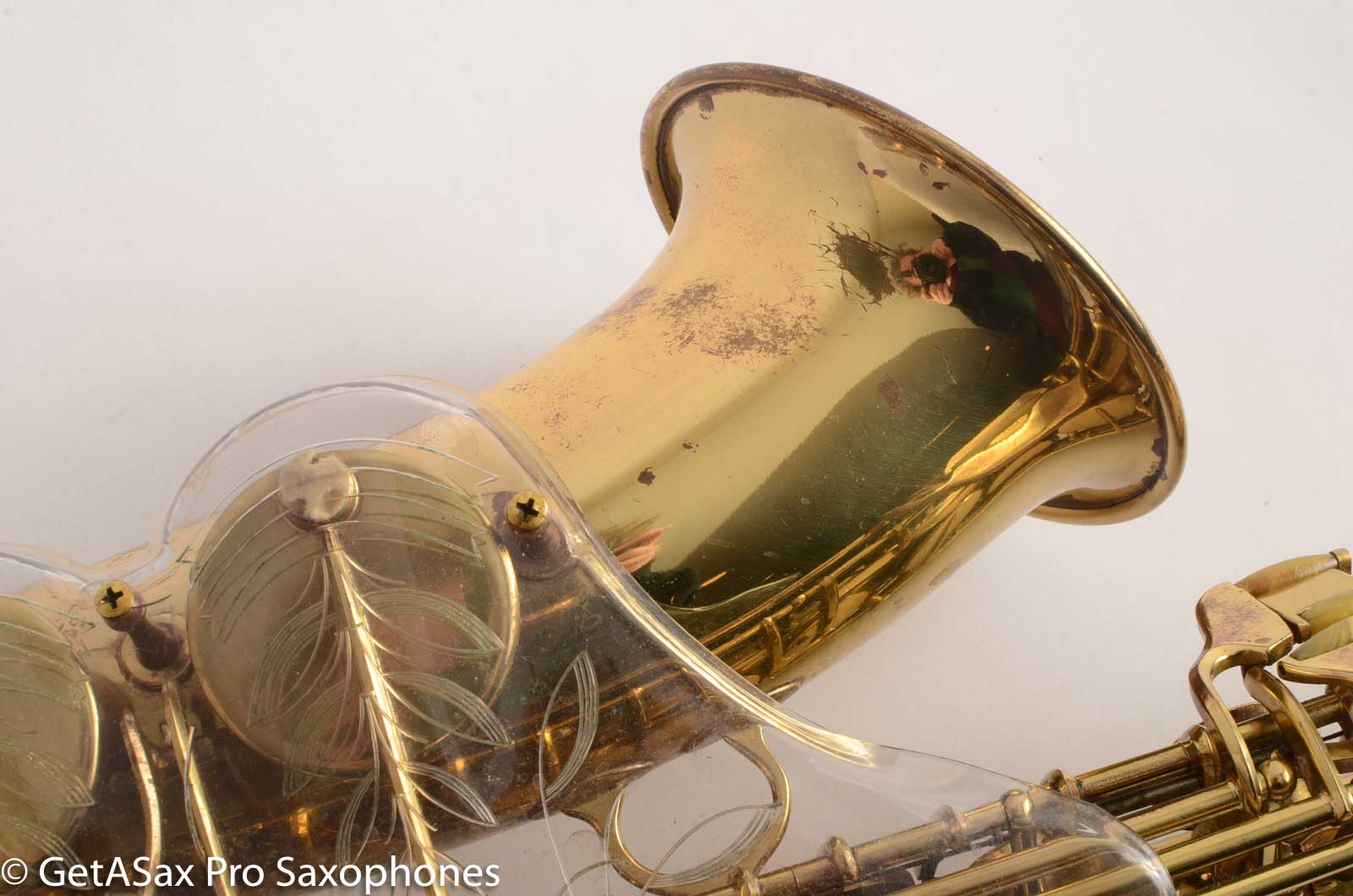
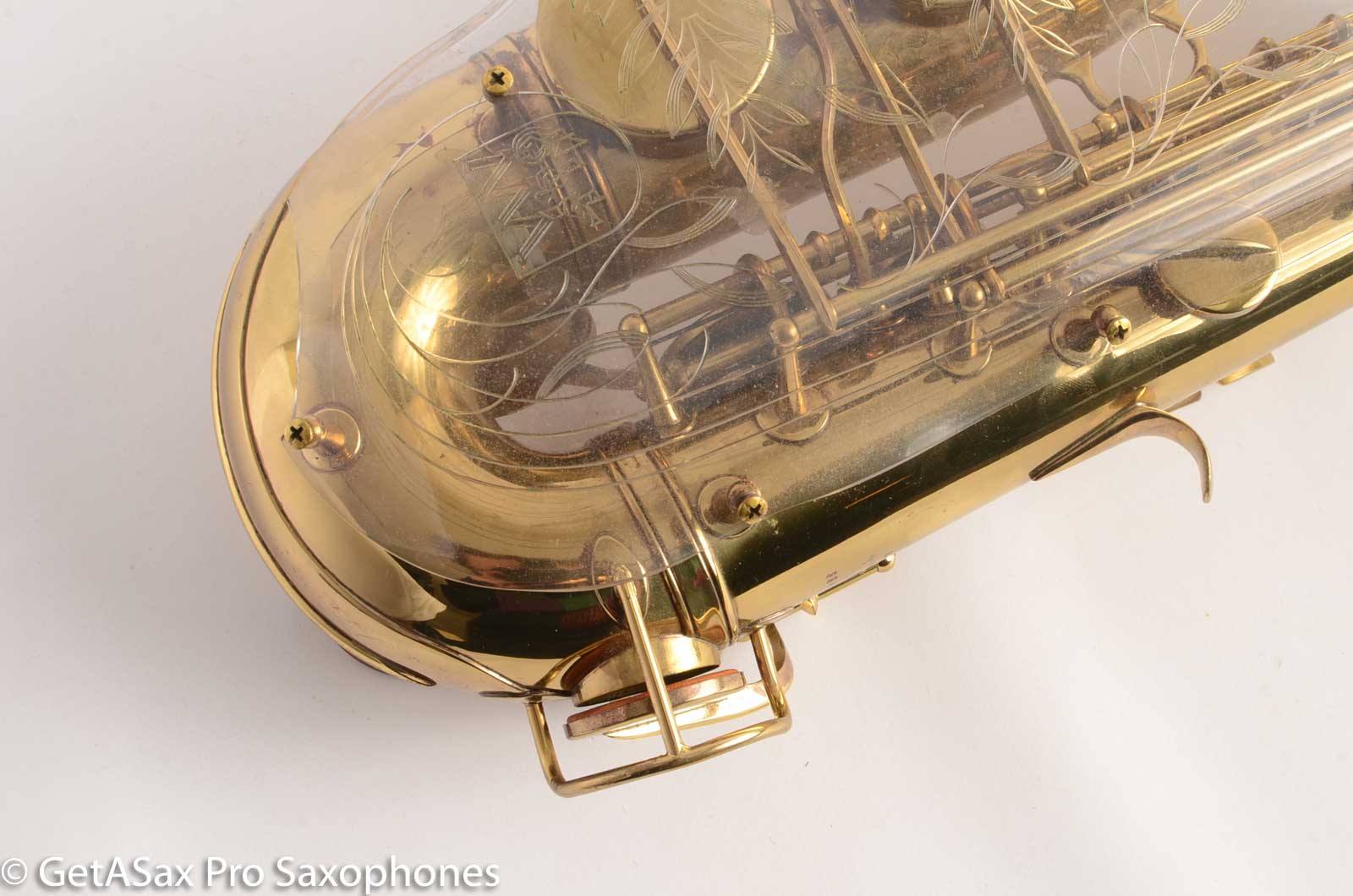
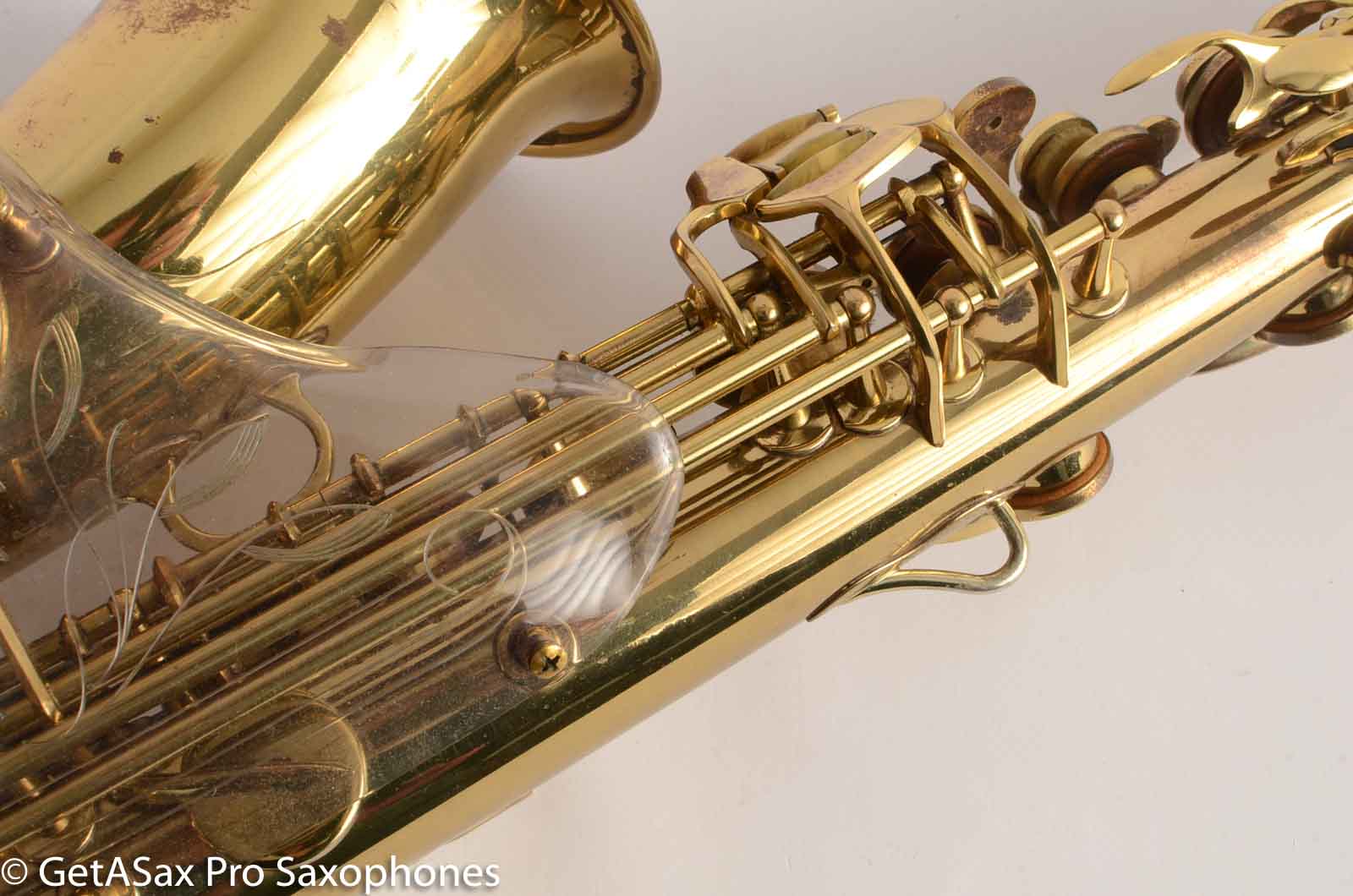
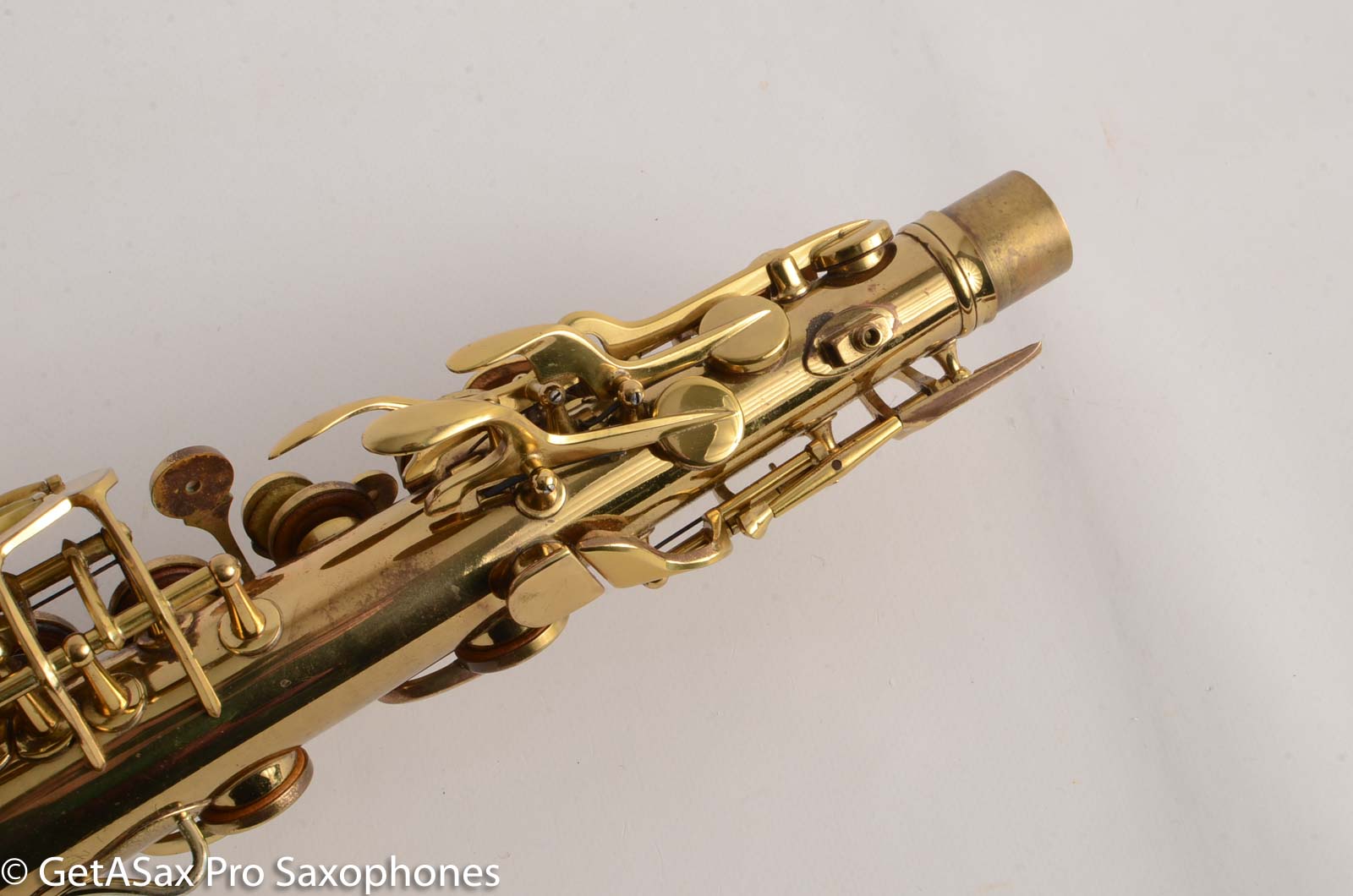
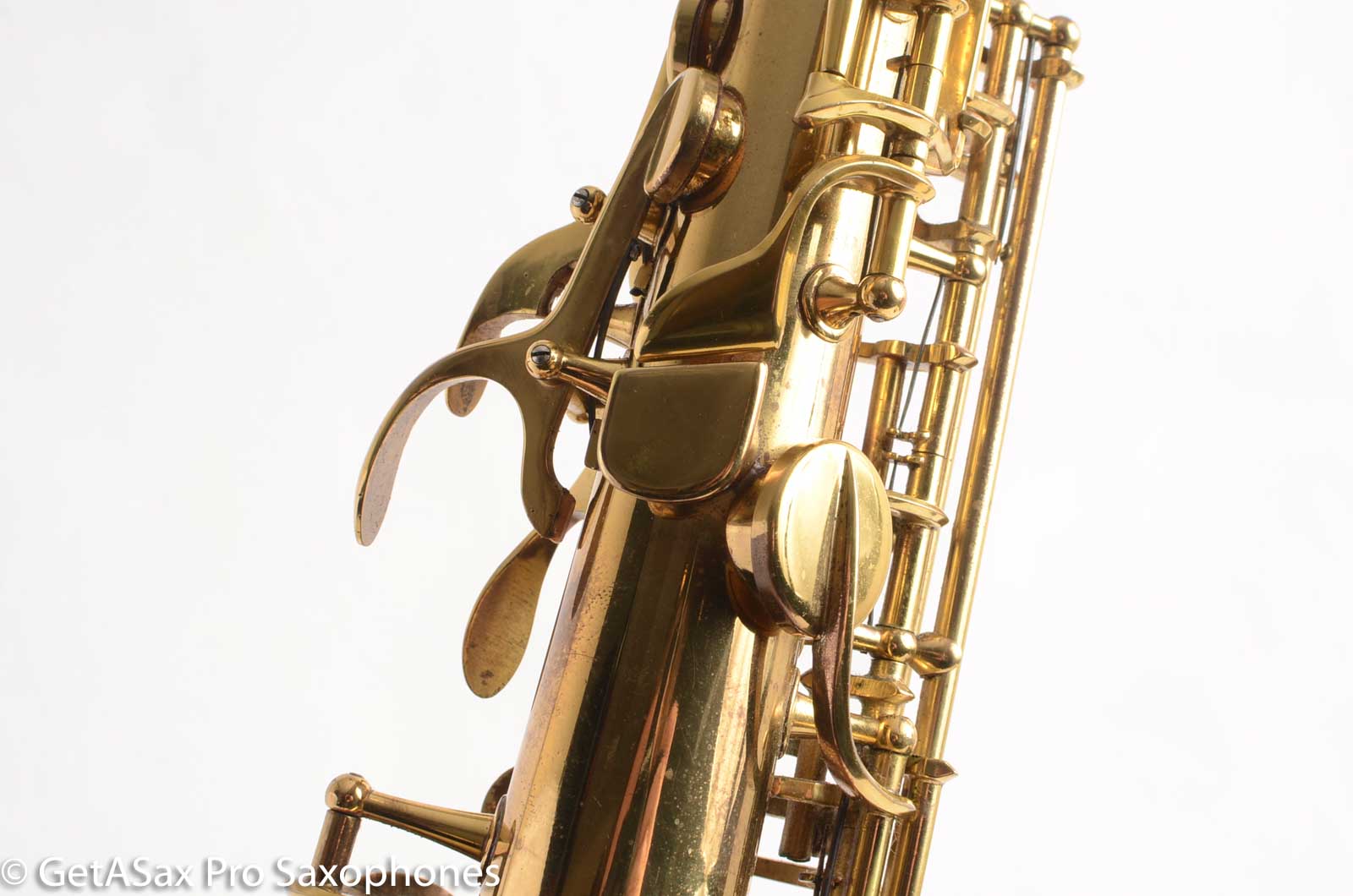
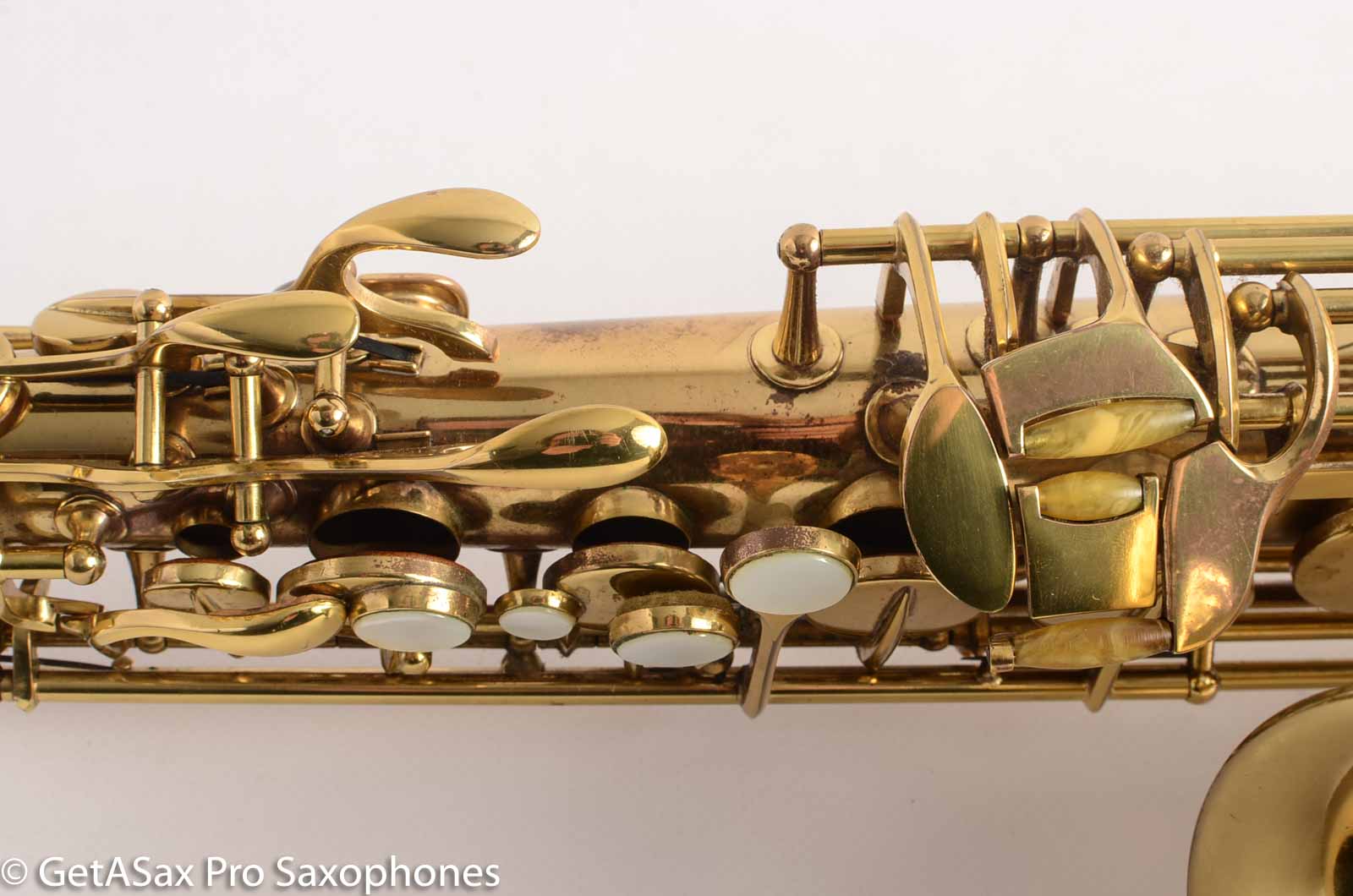
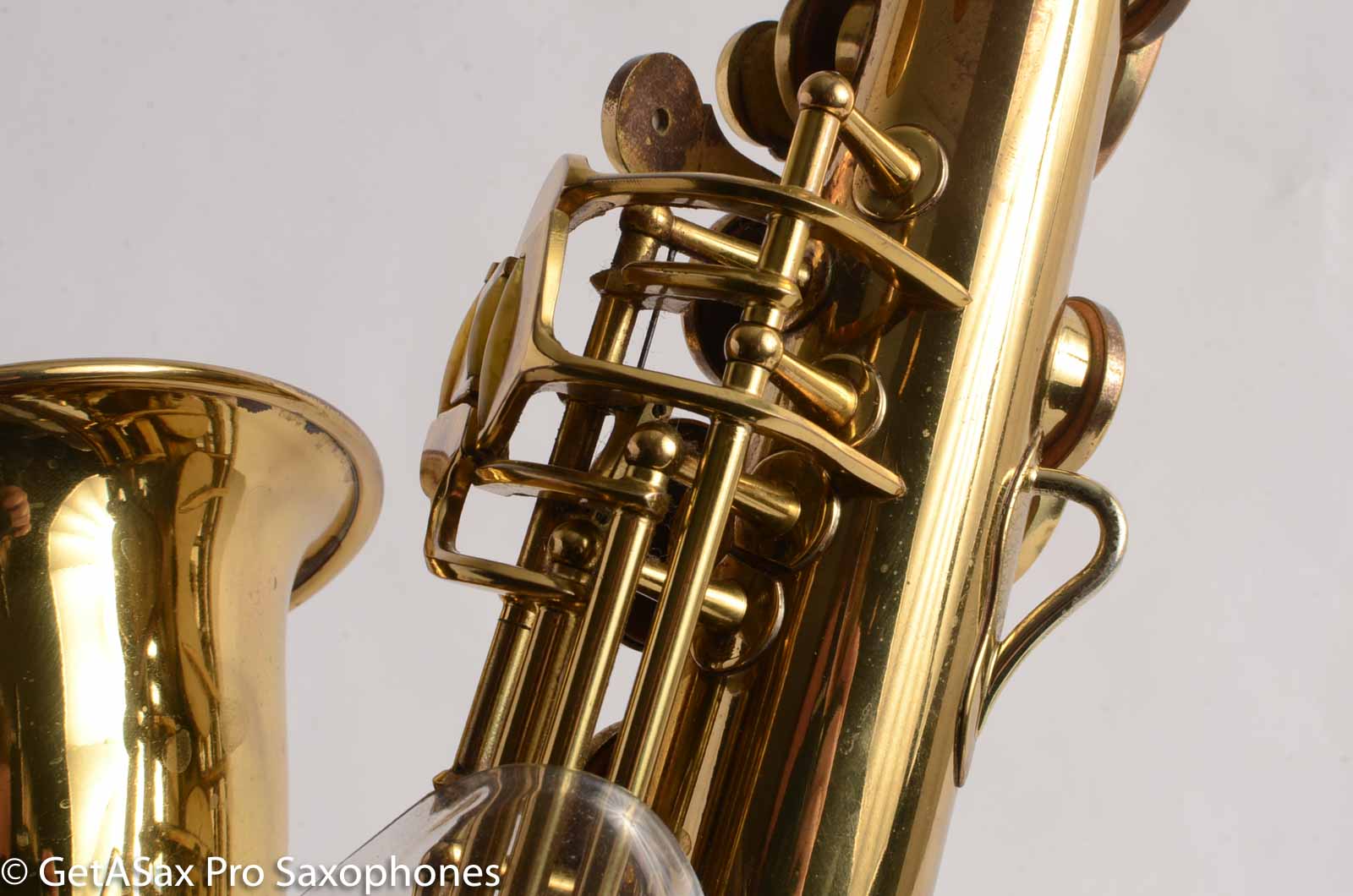
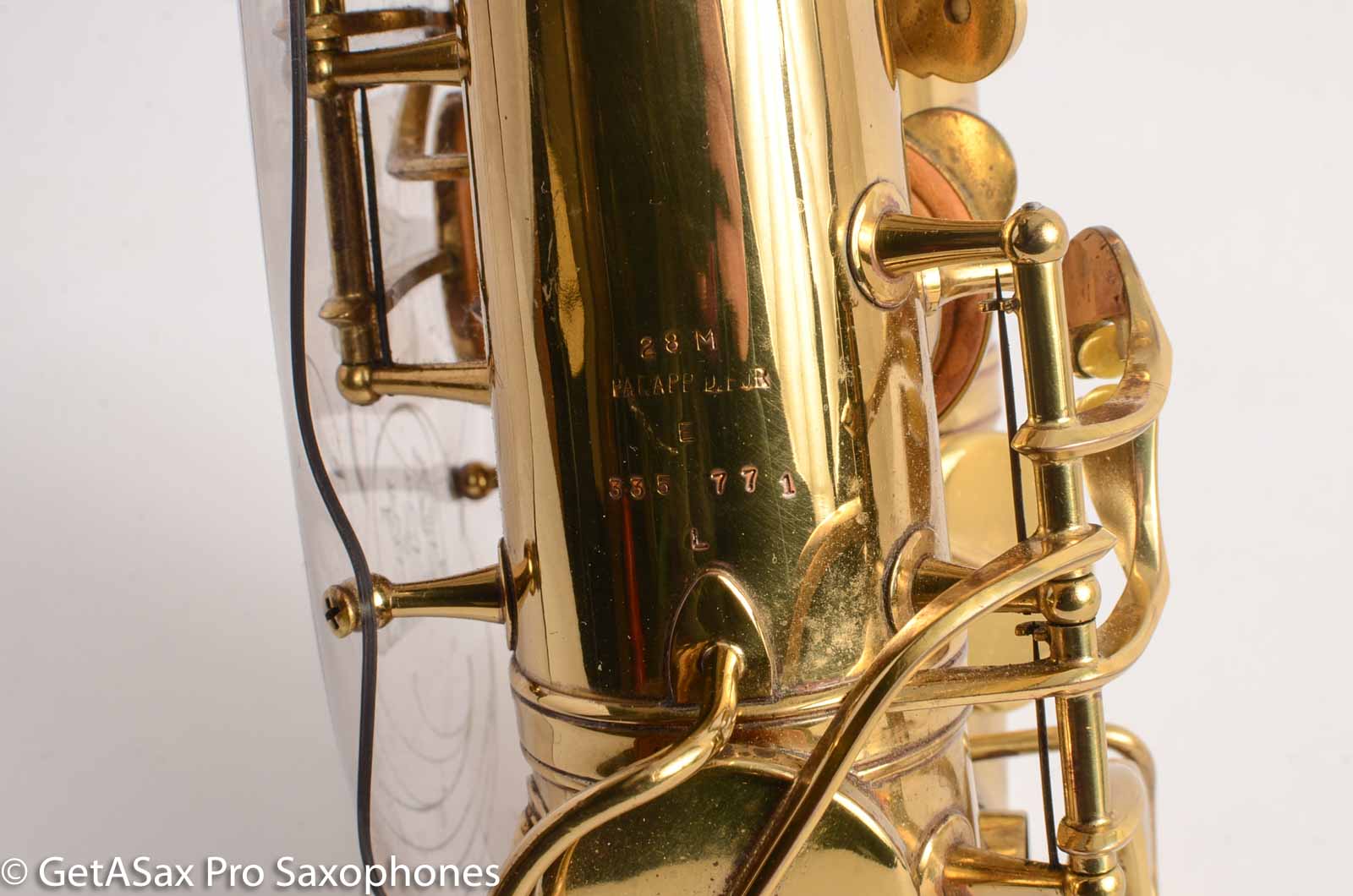
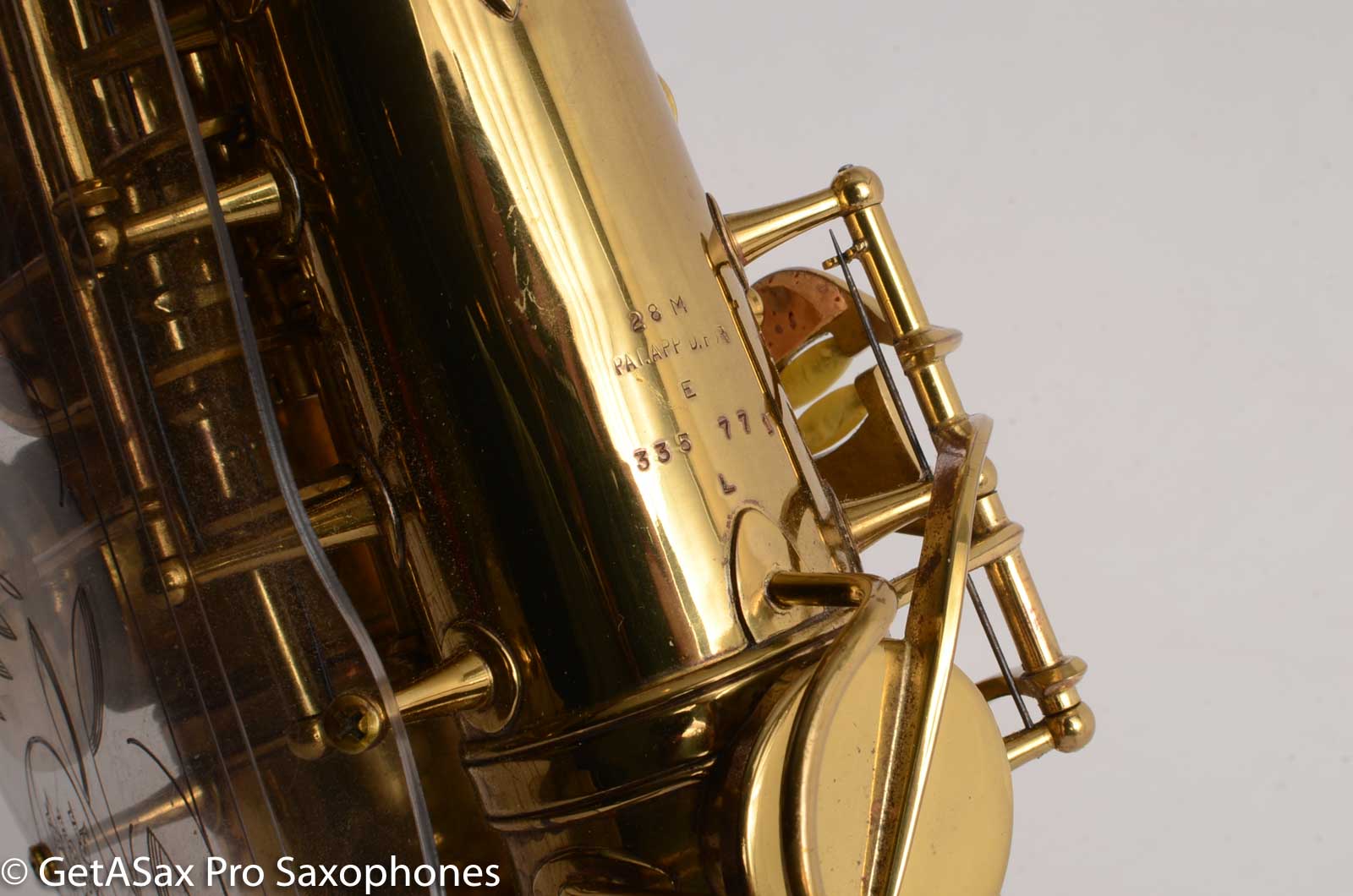
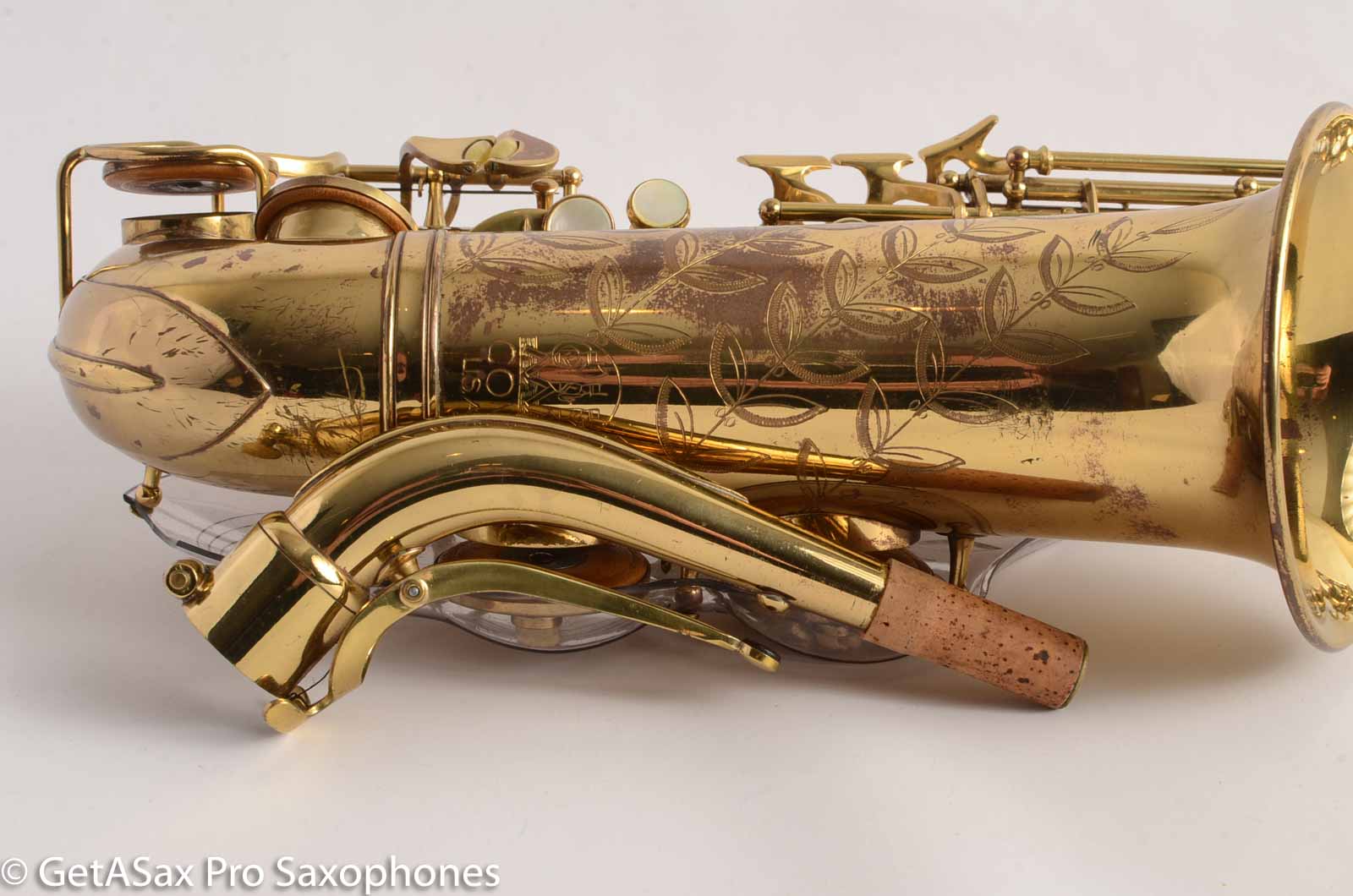
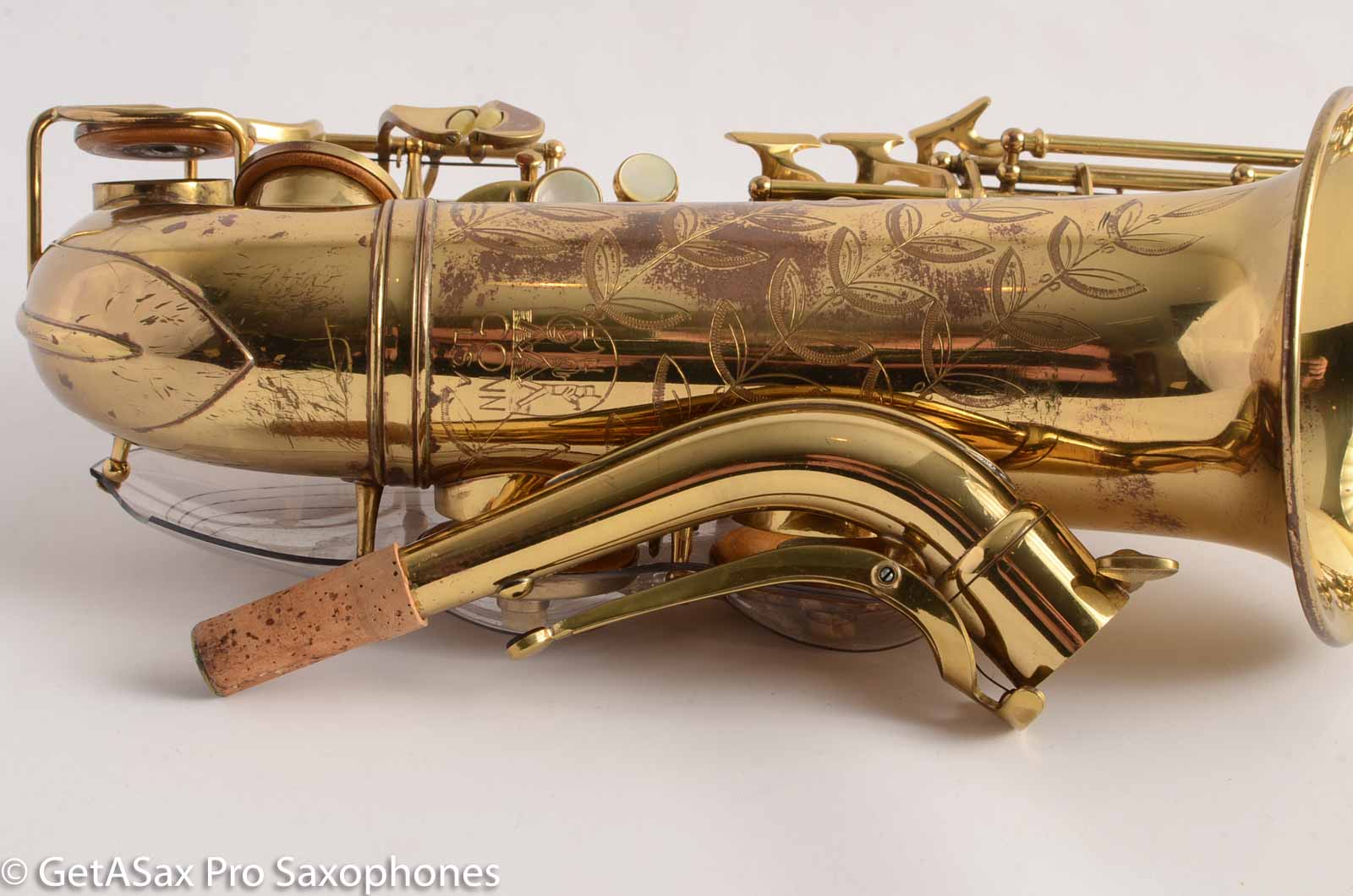


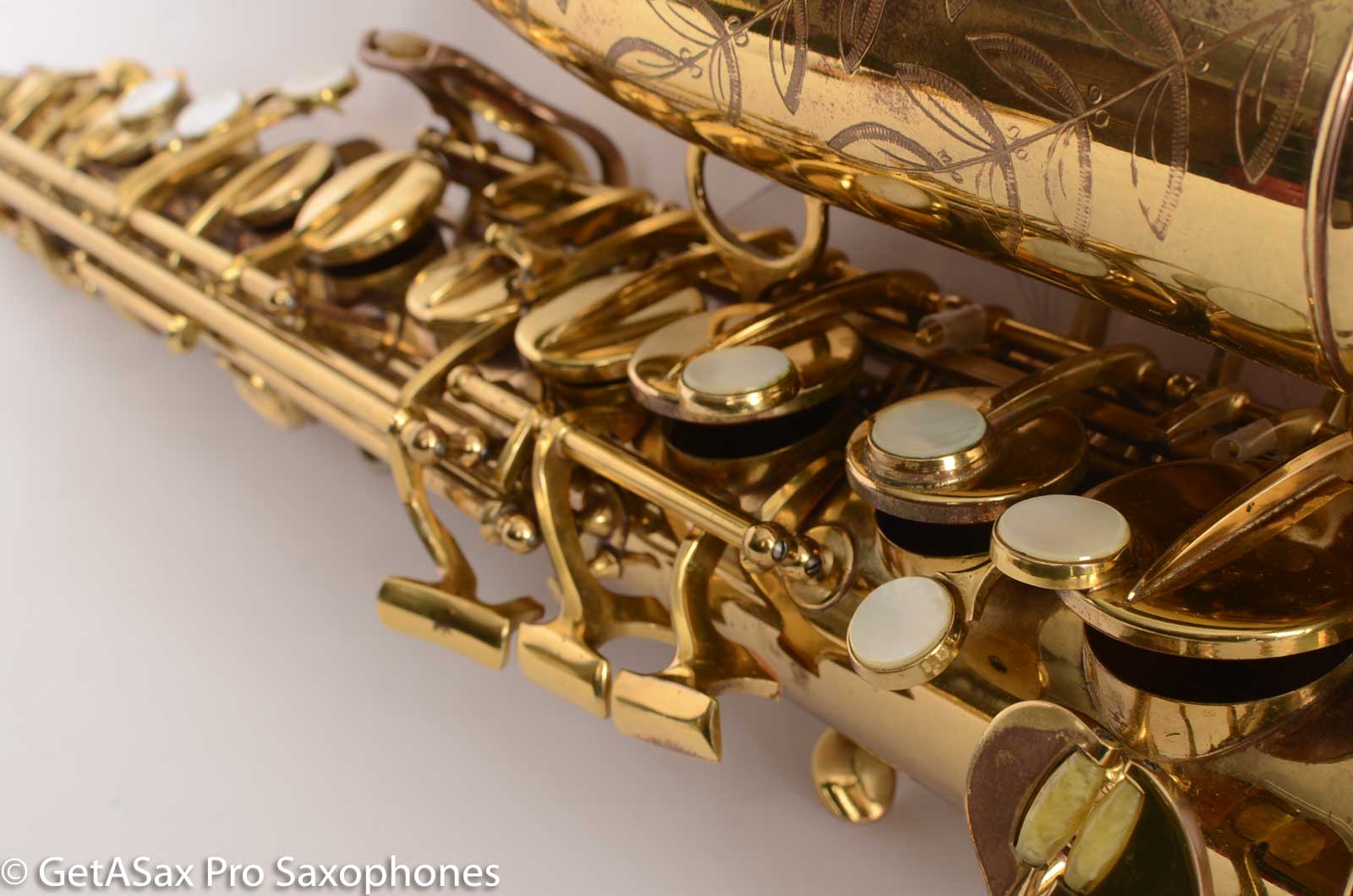
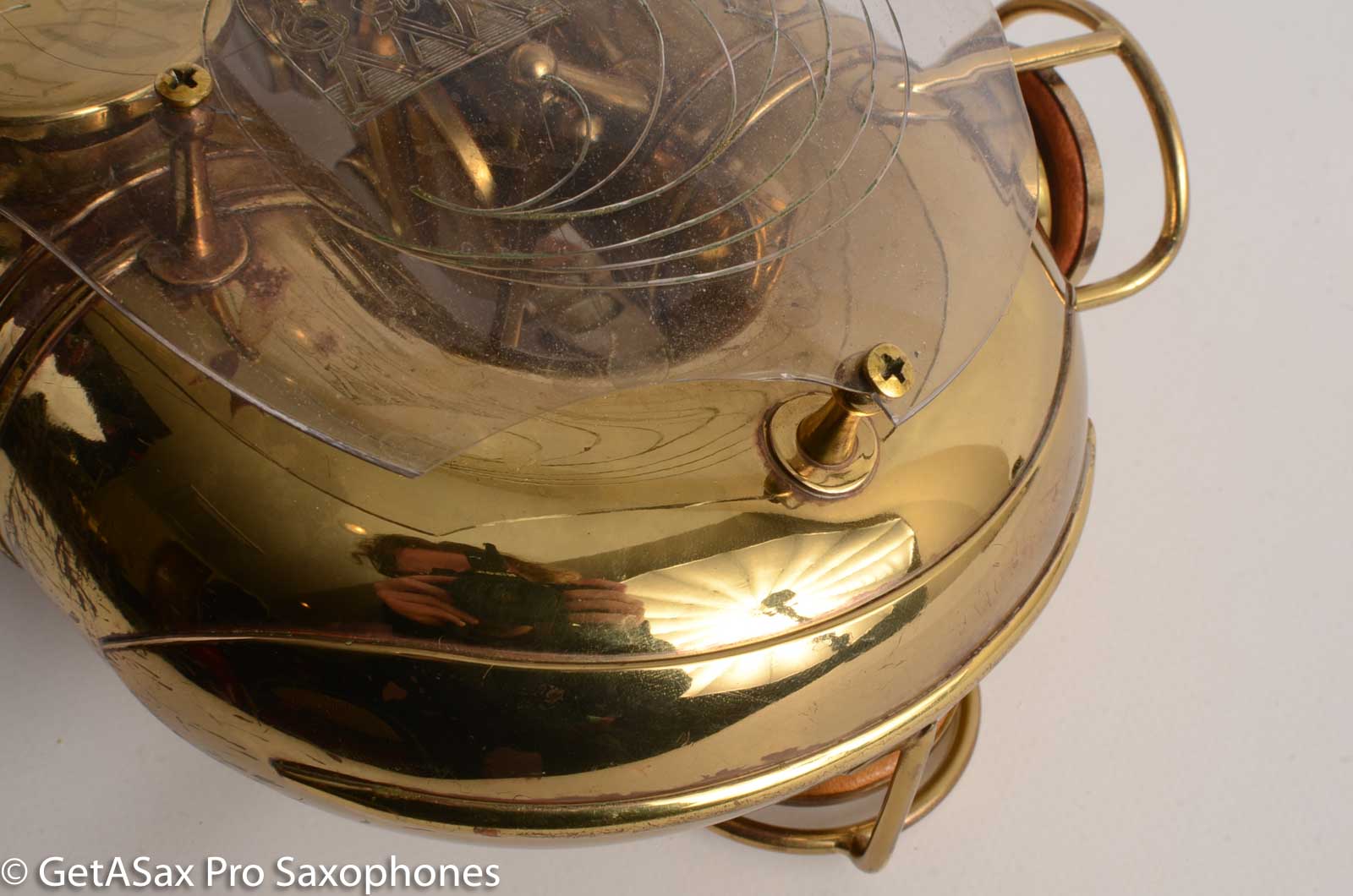
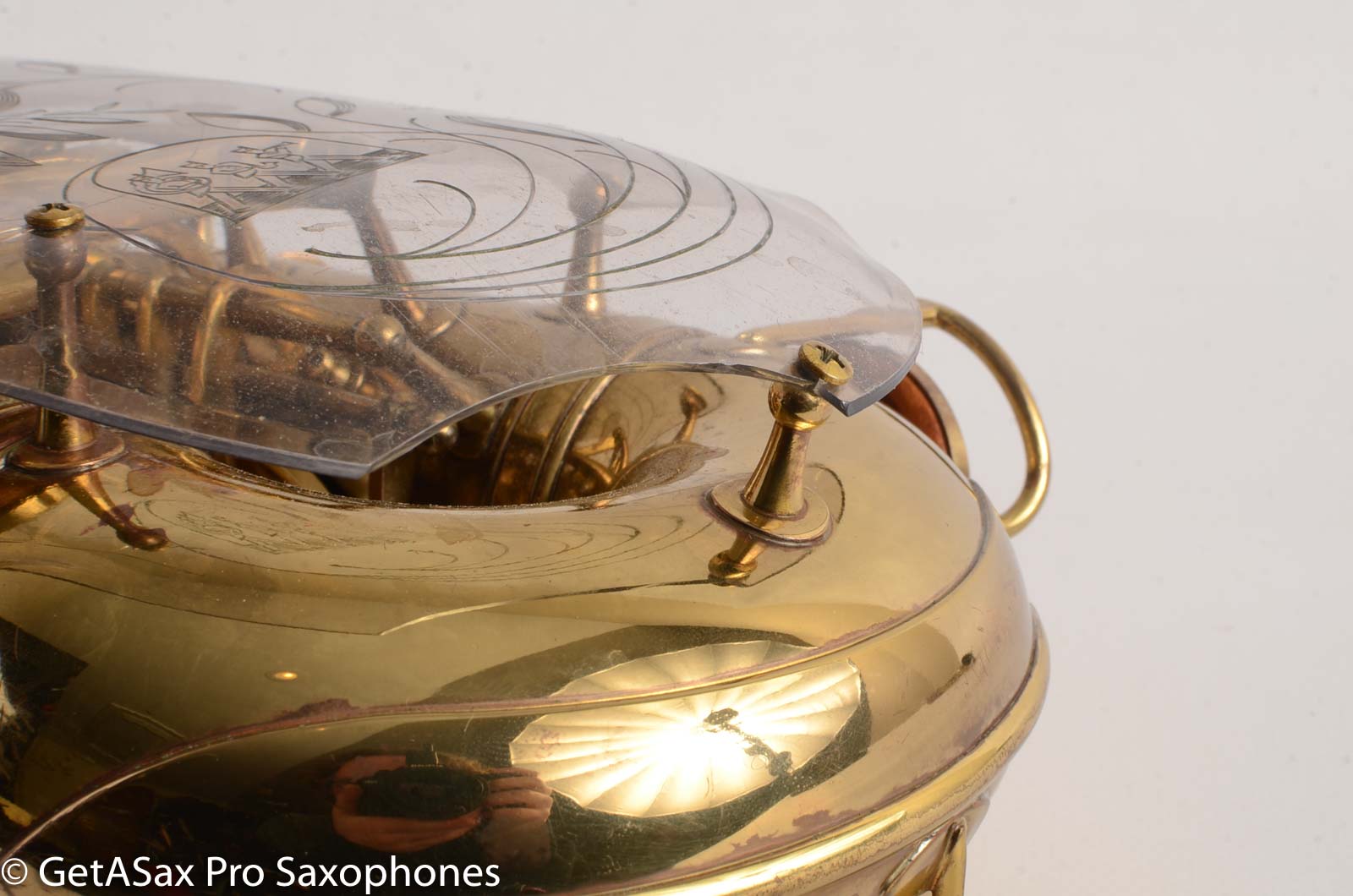
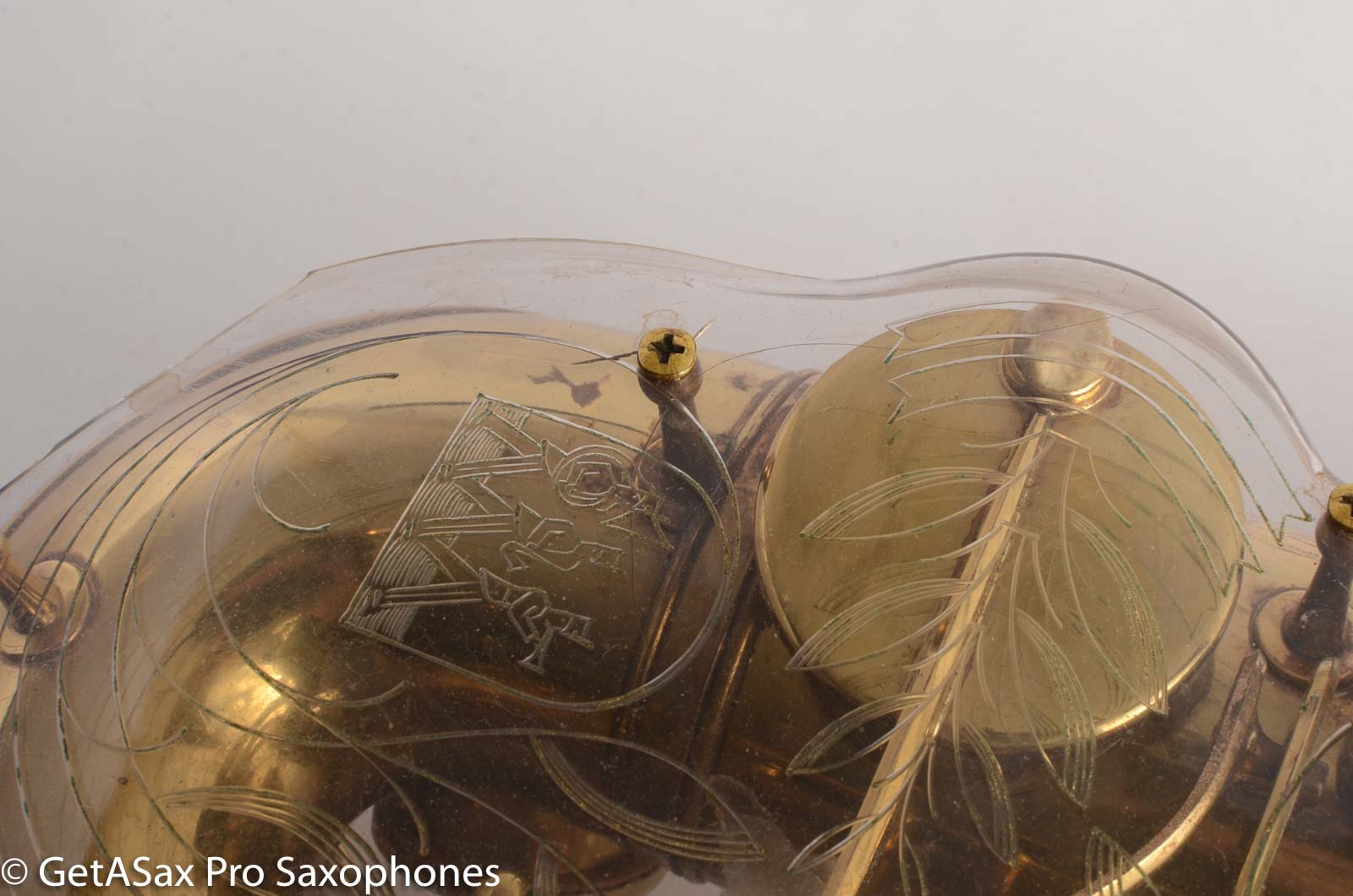
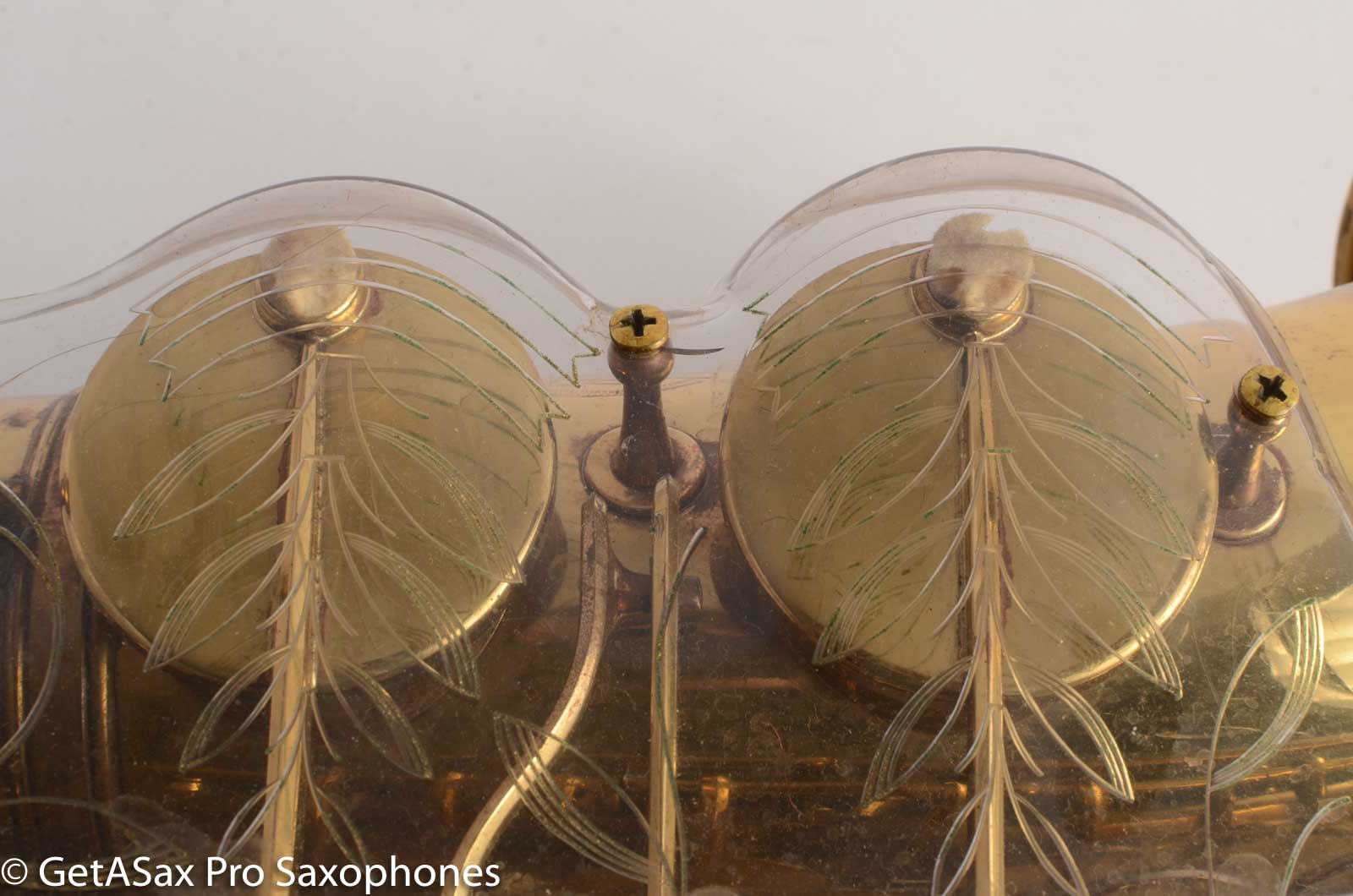
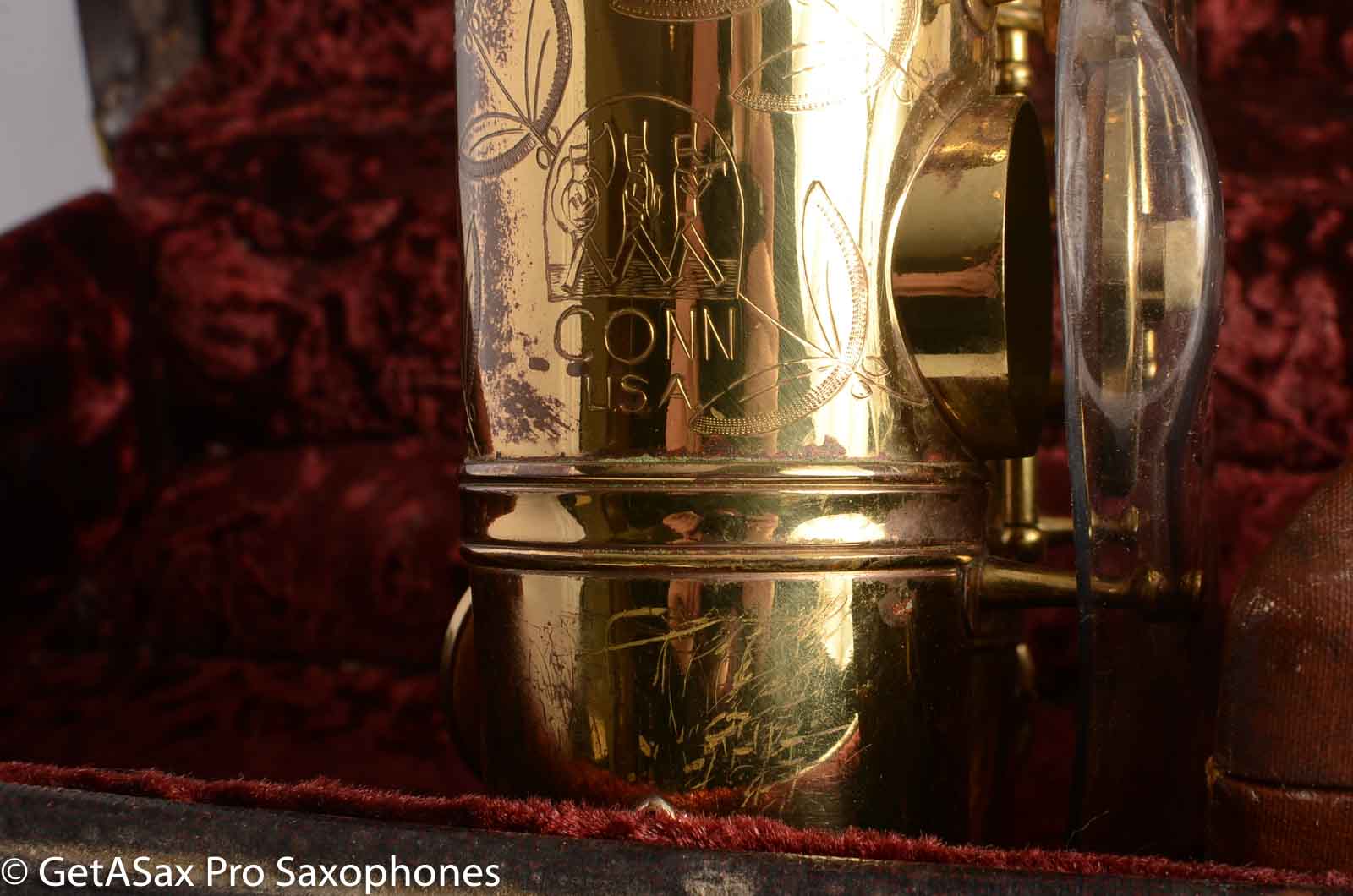
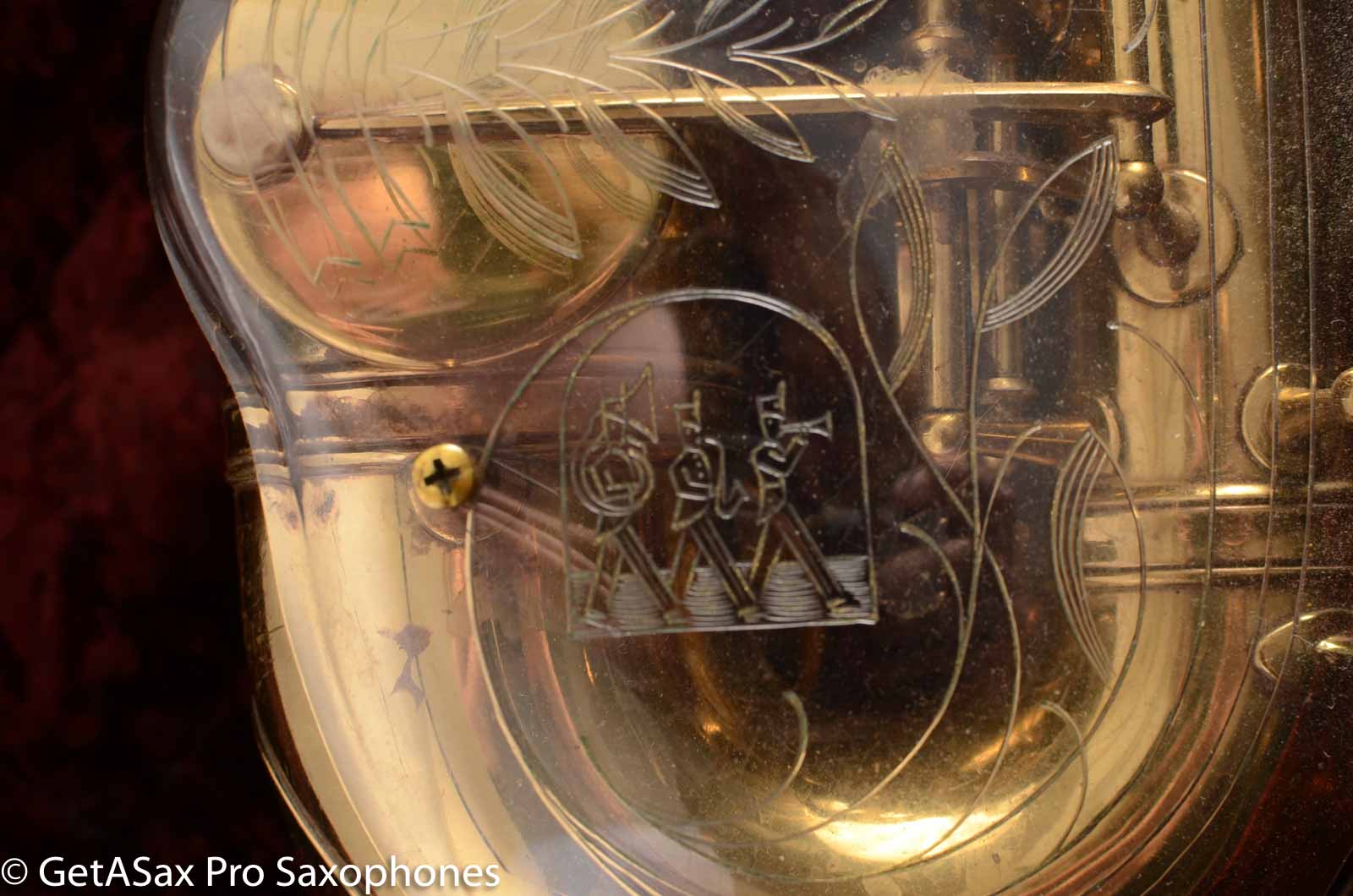
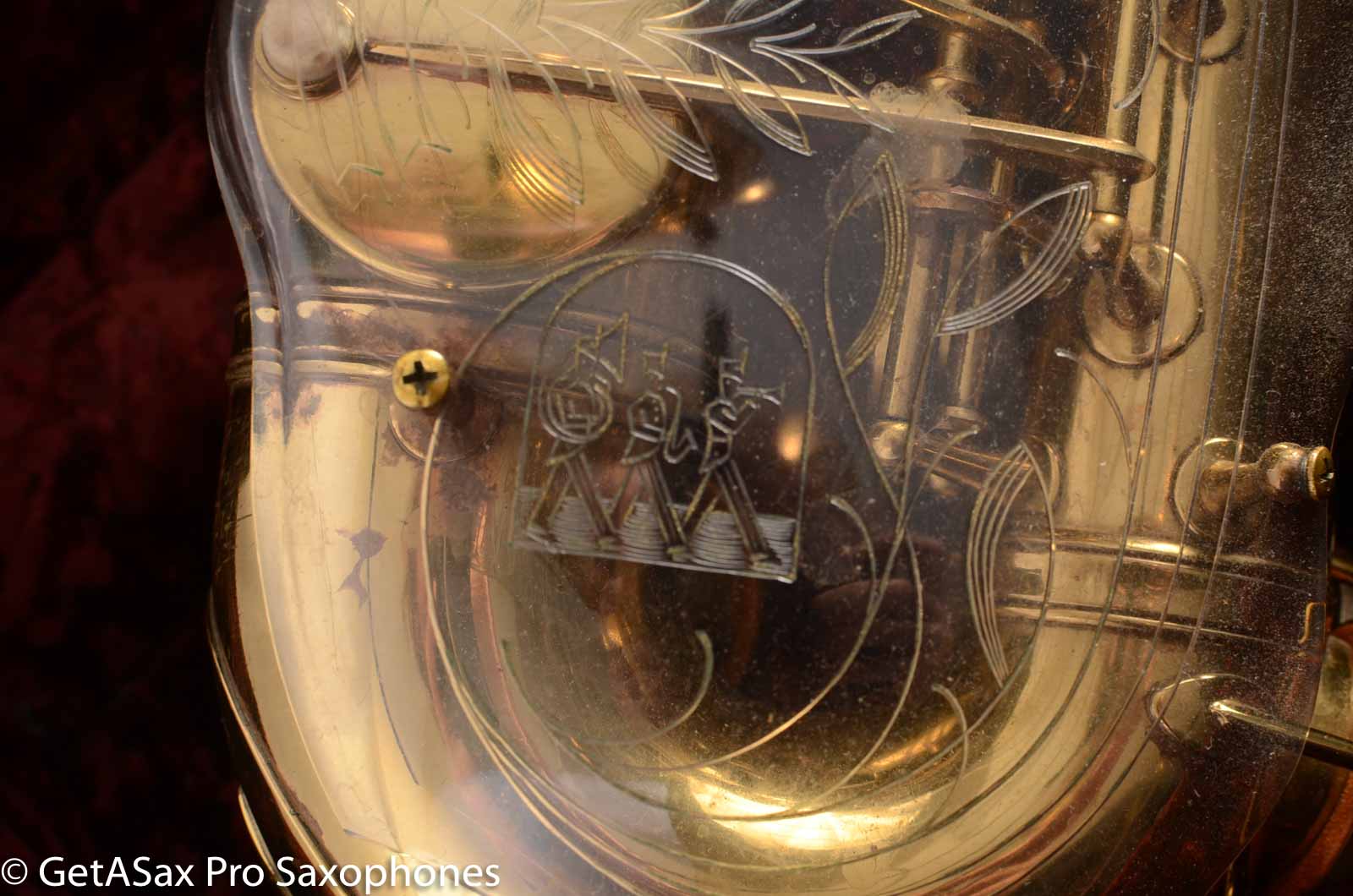
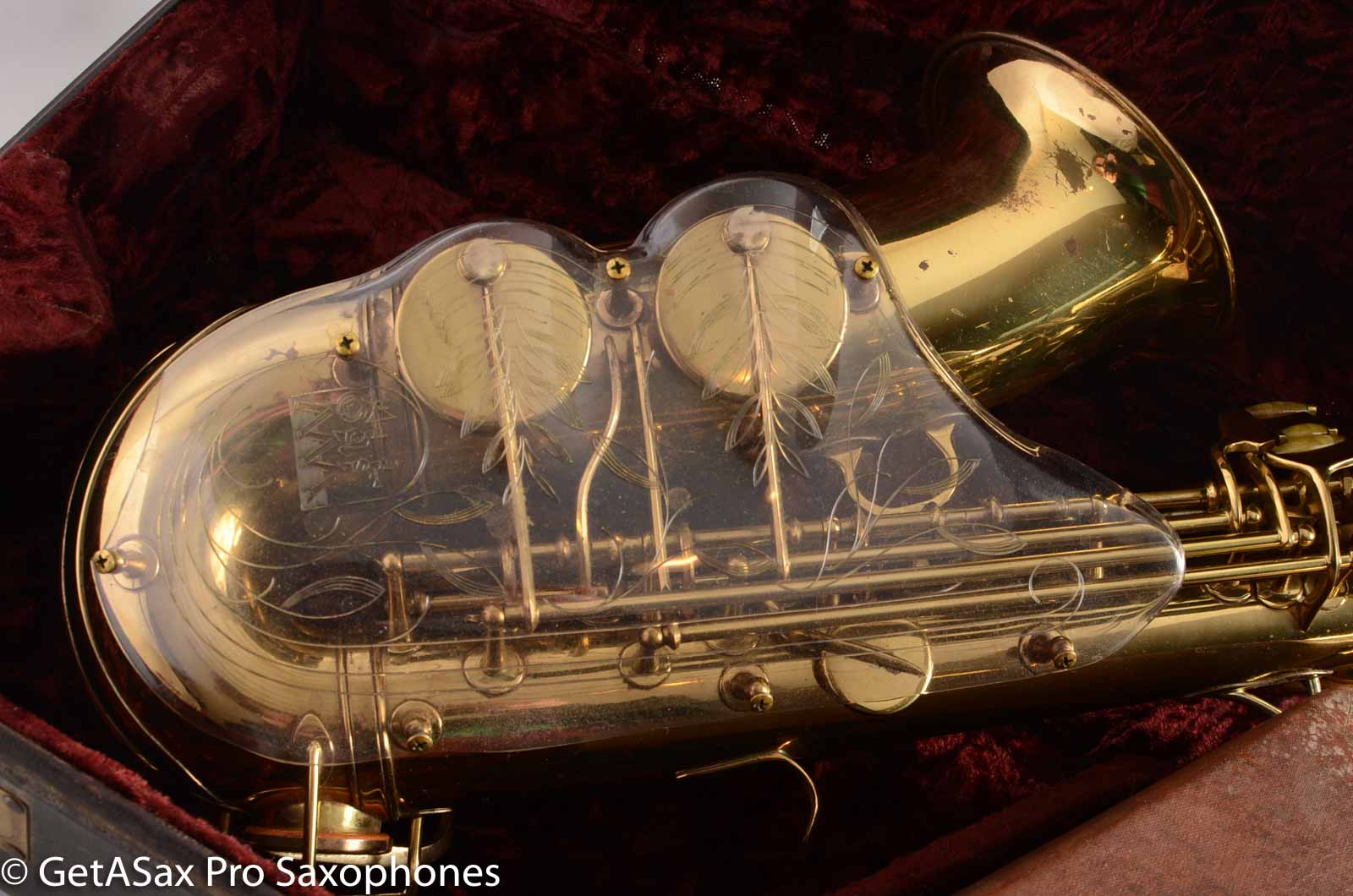

Reviews
There are no reviews yet.